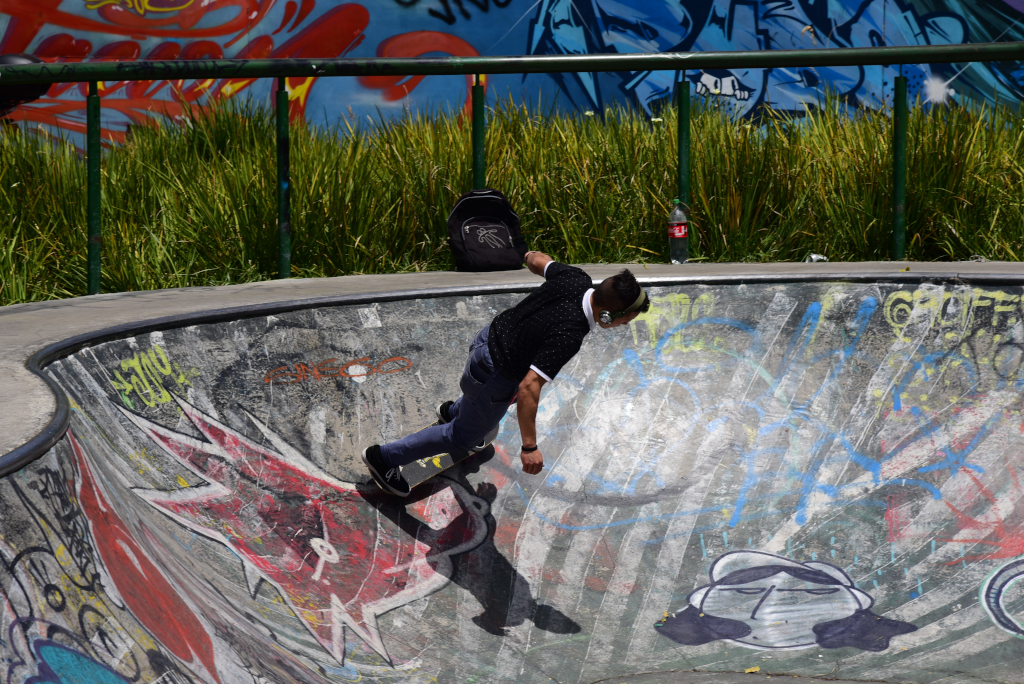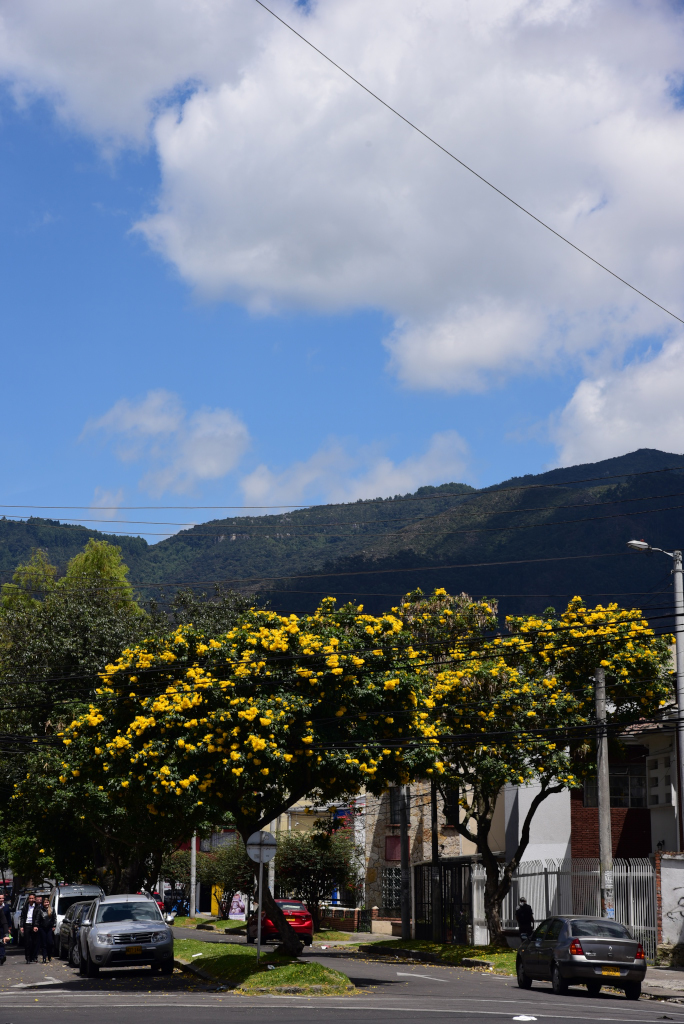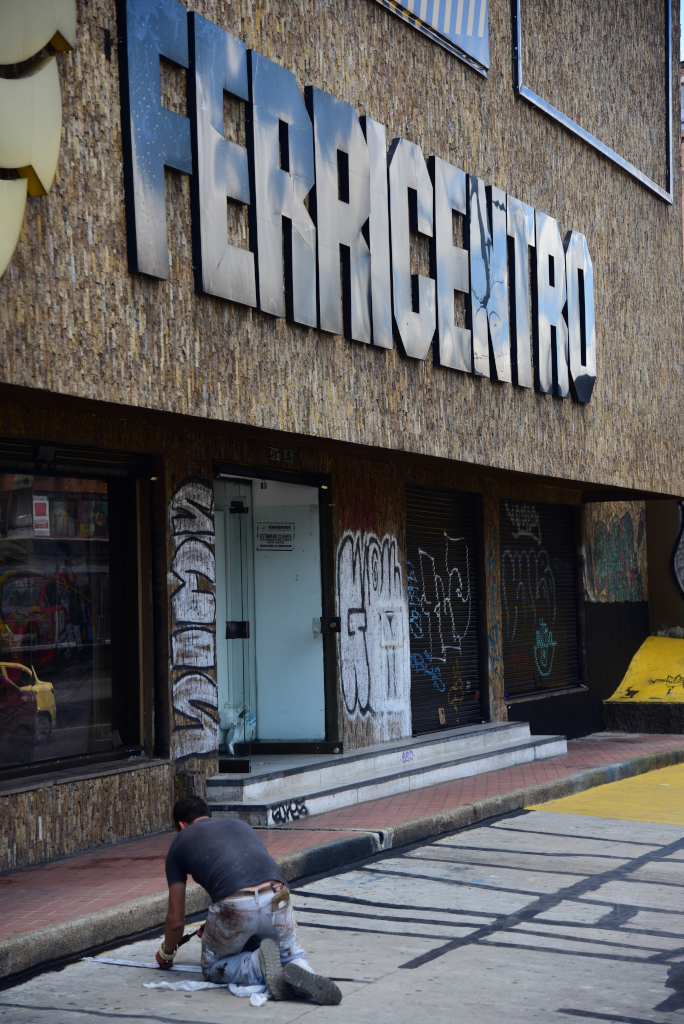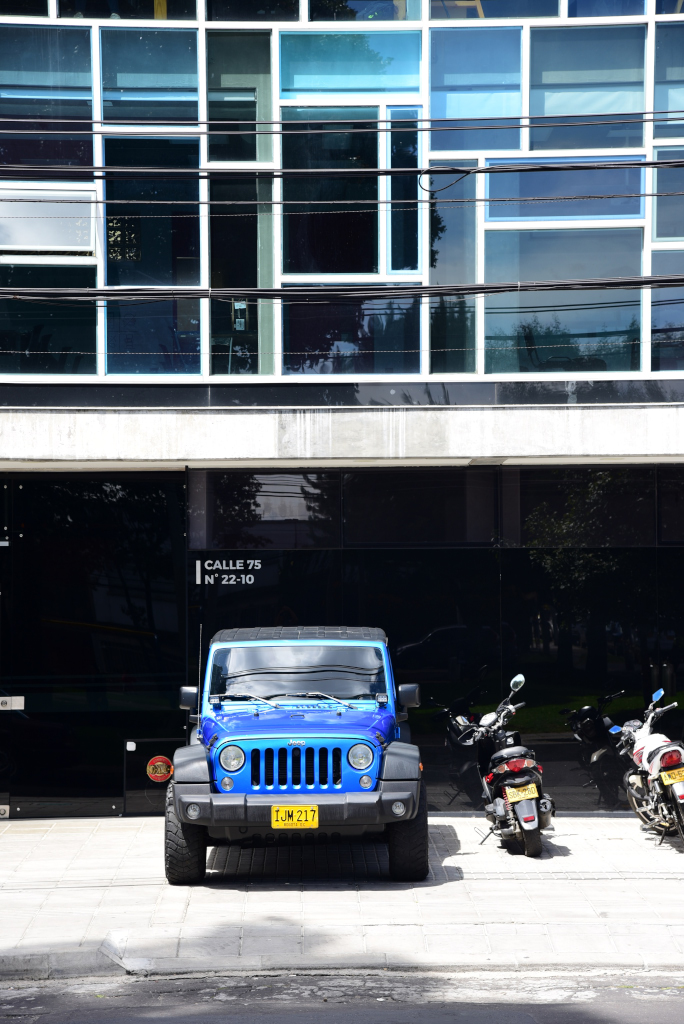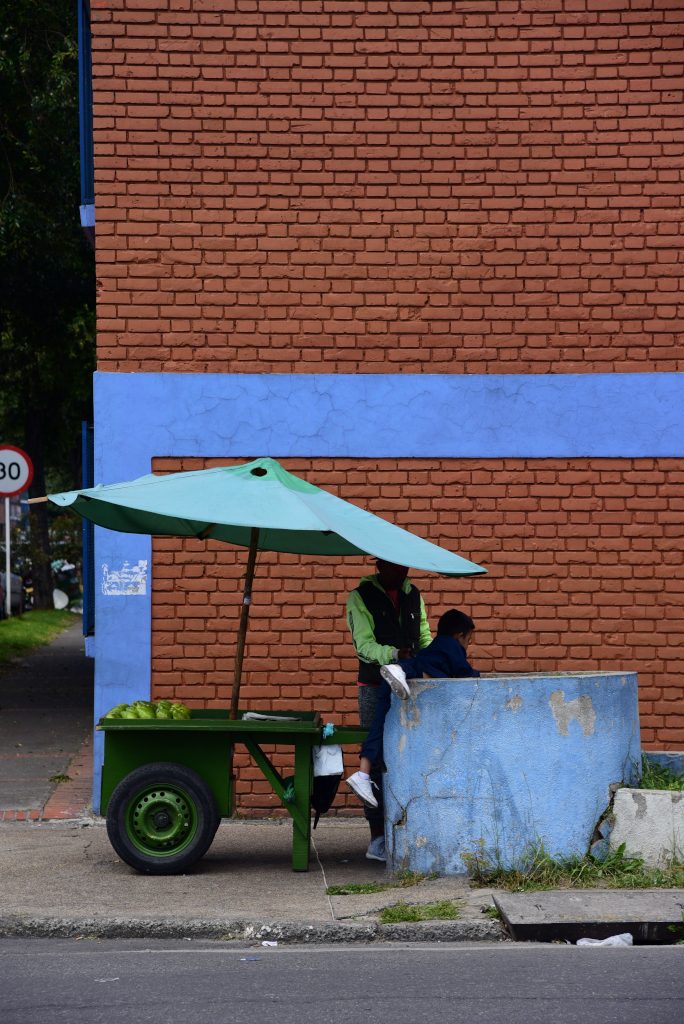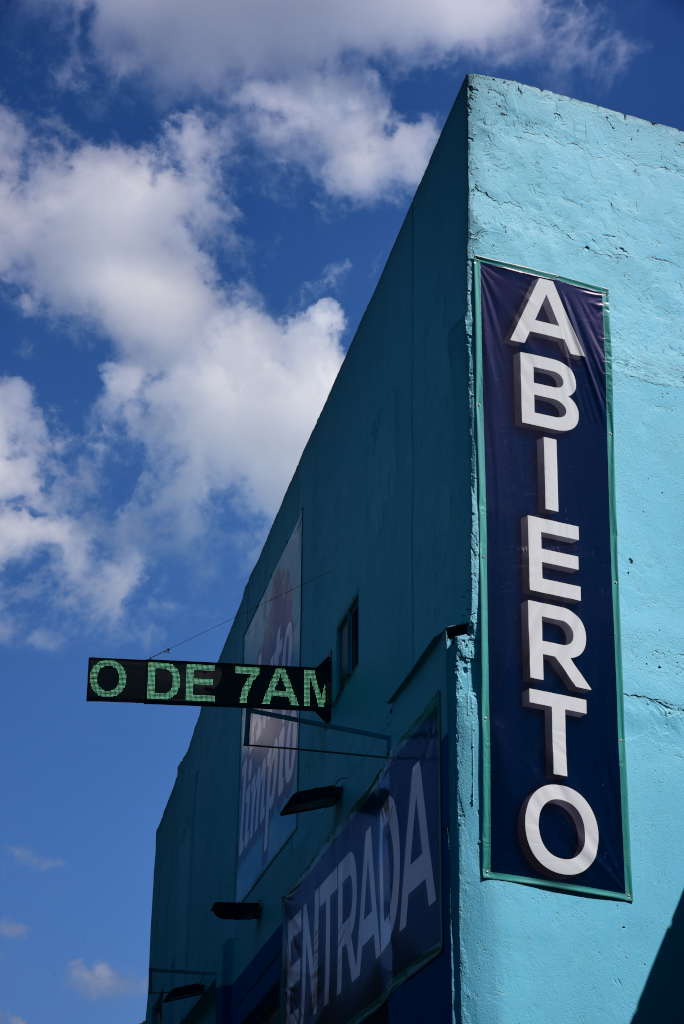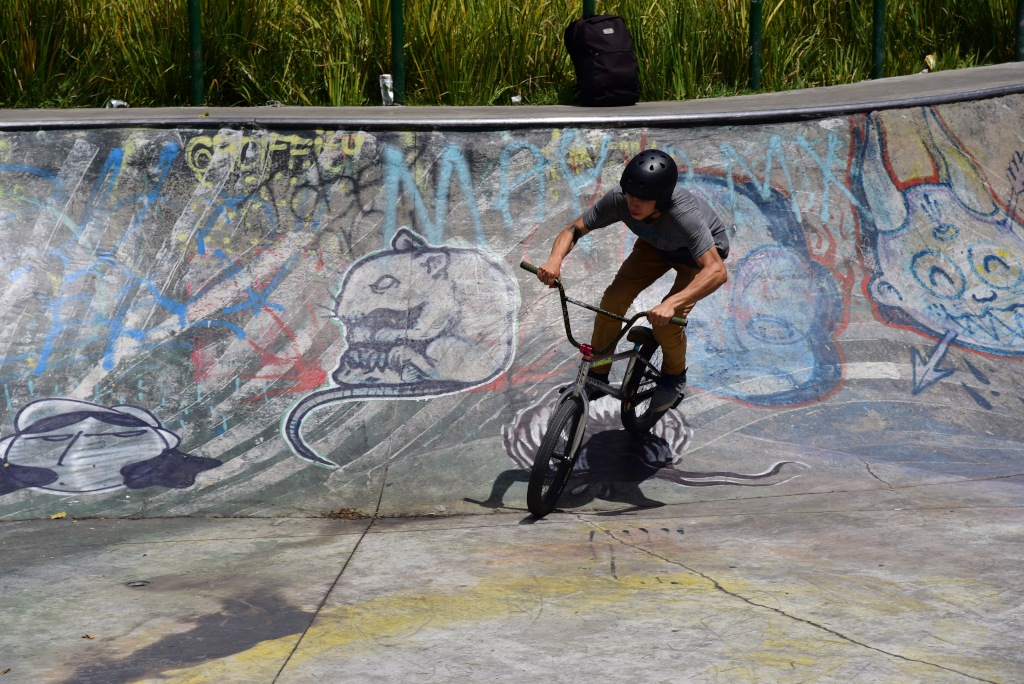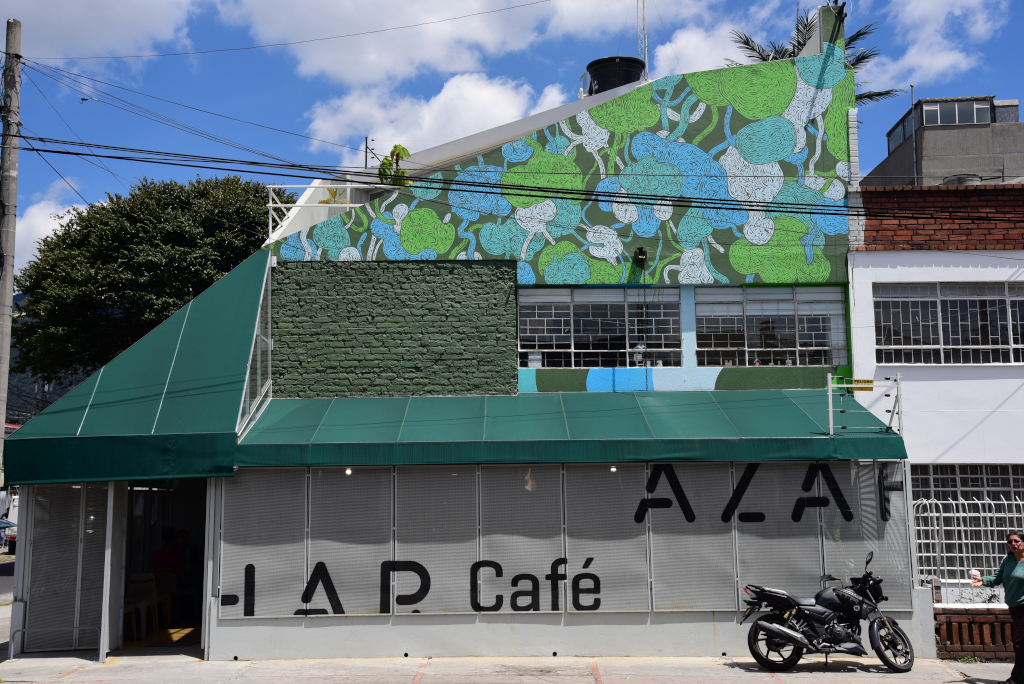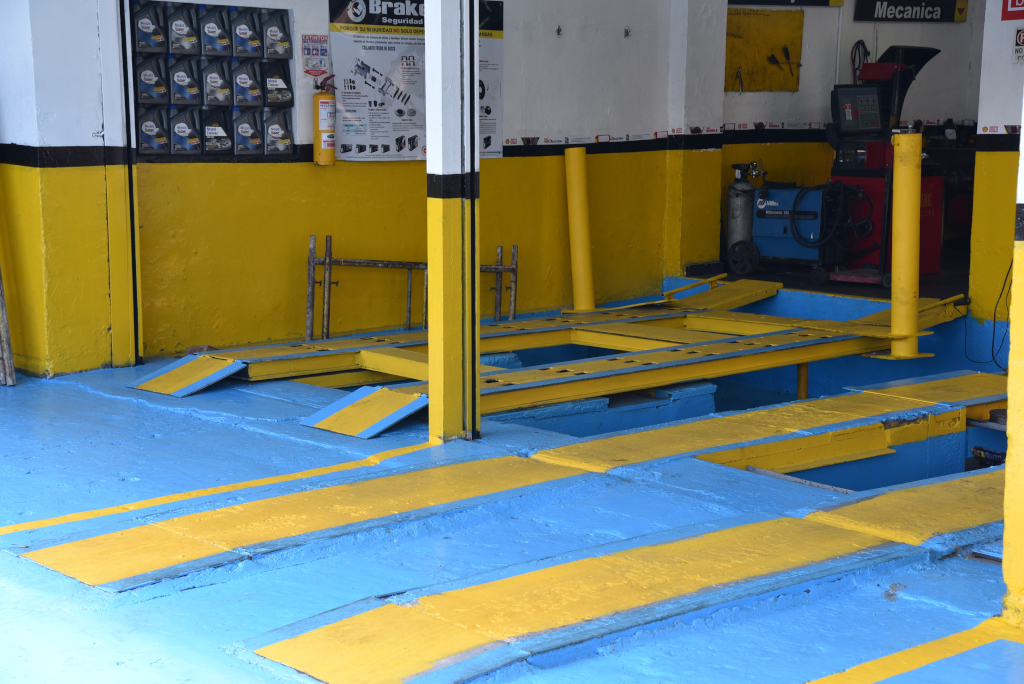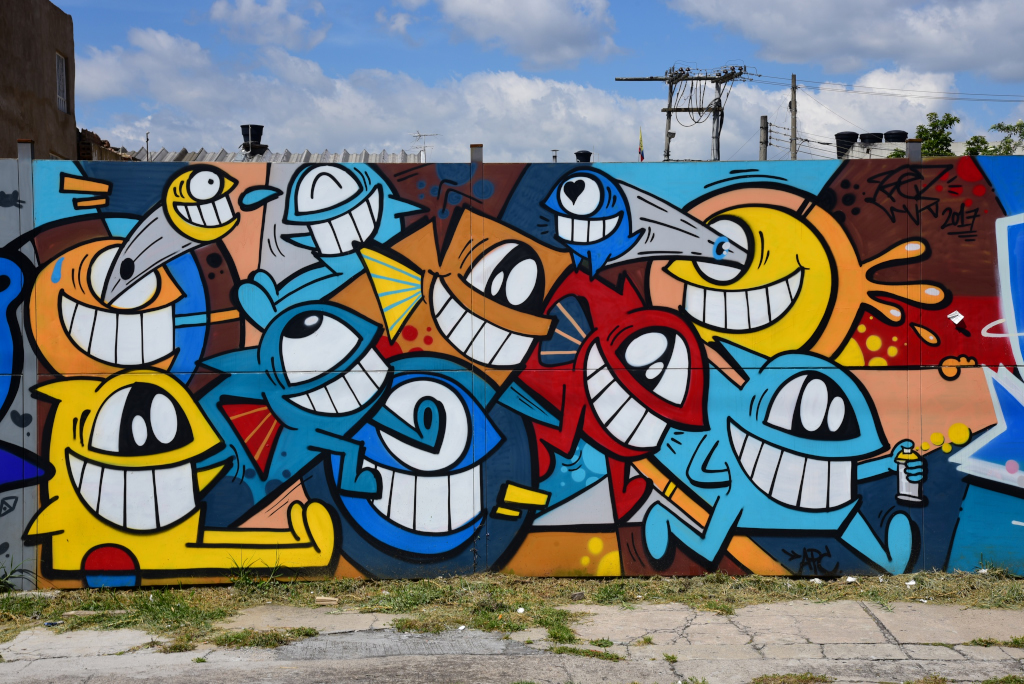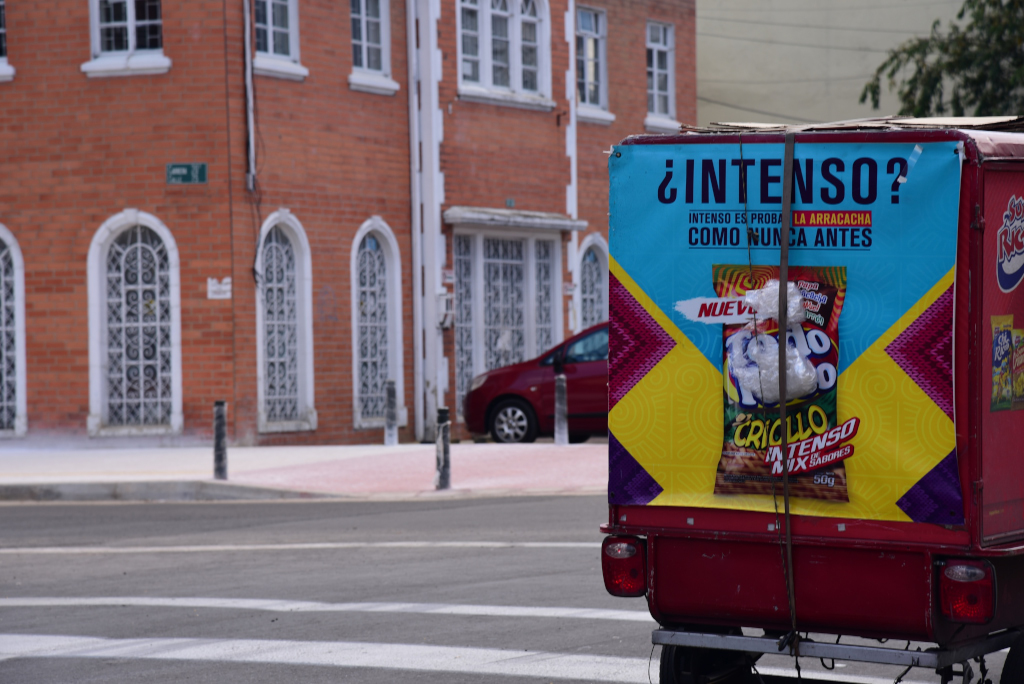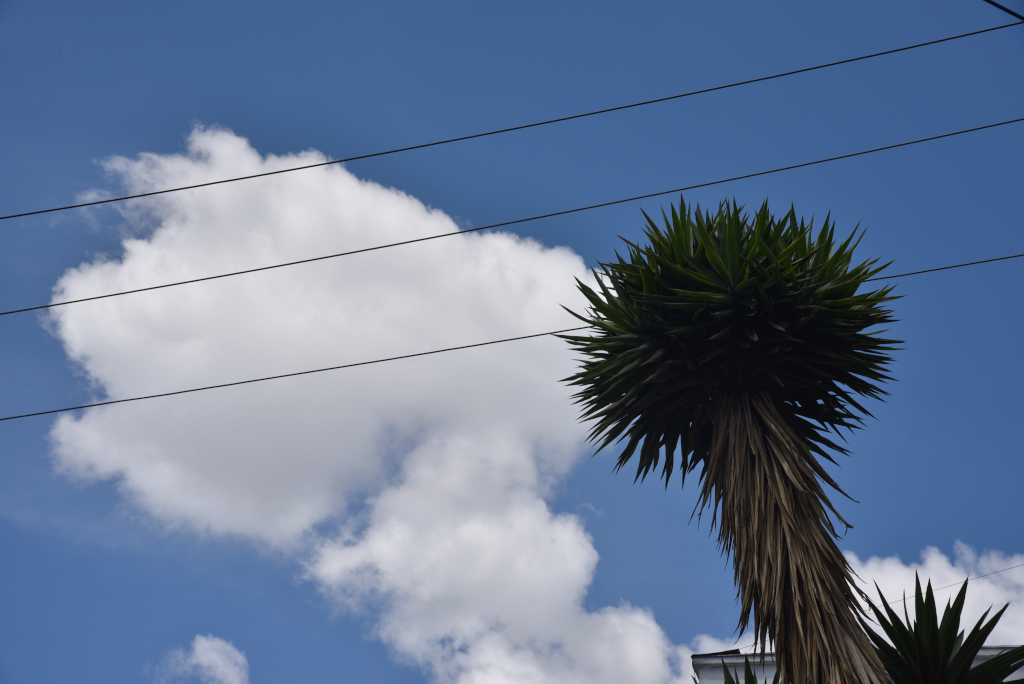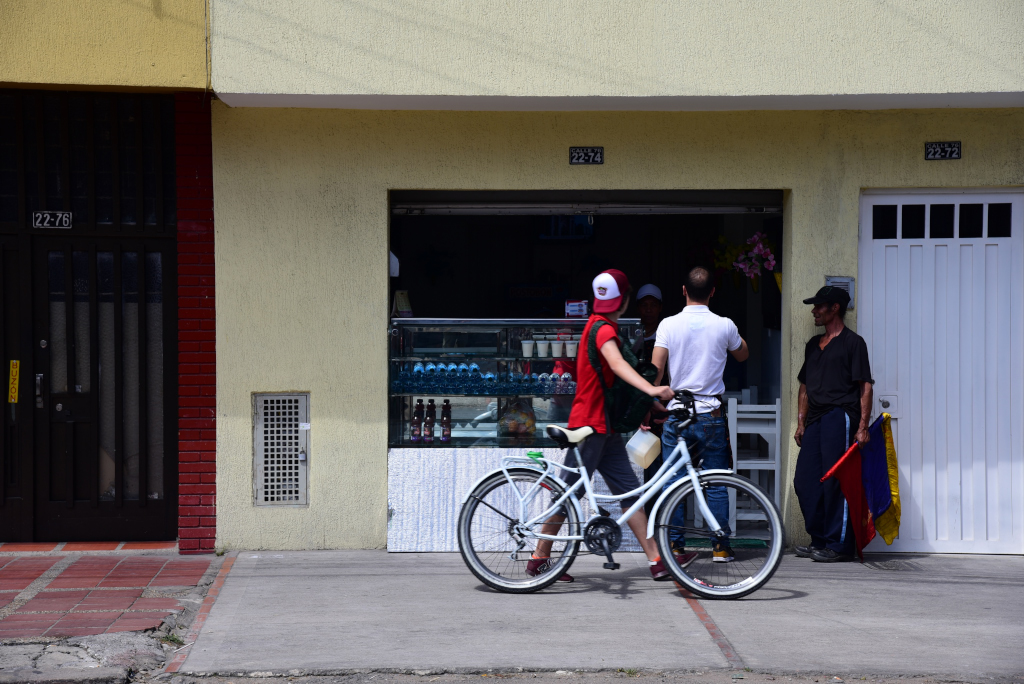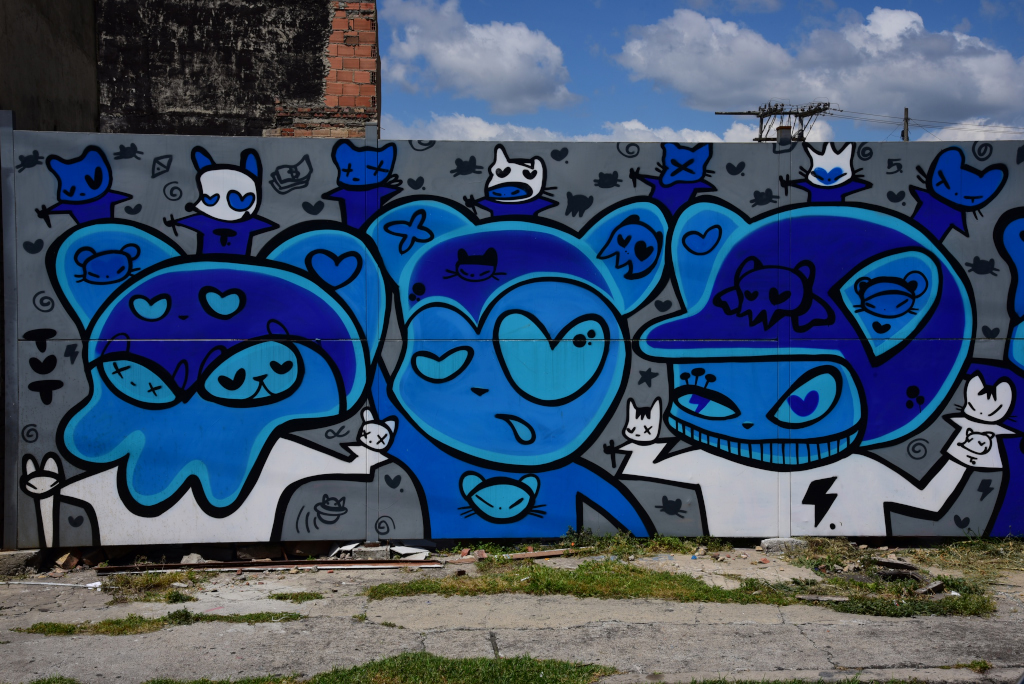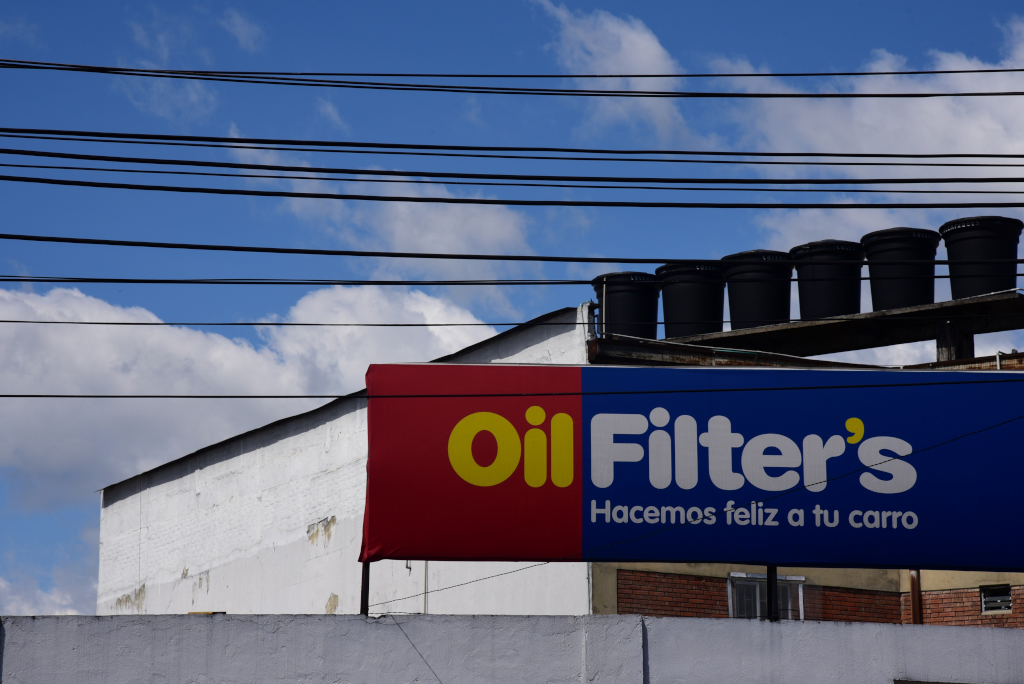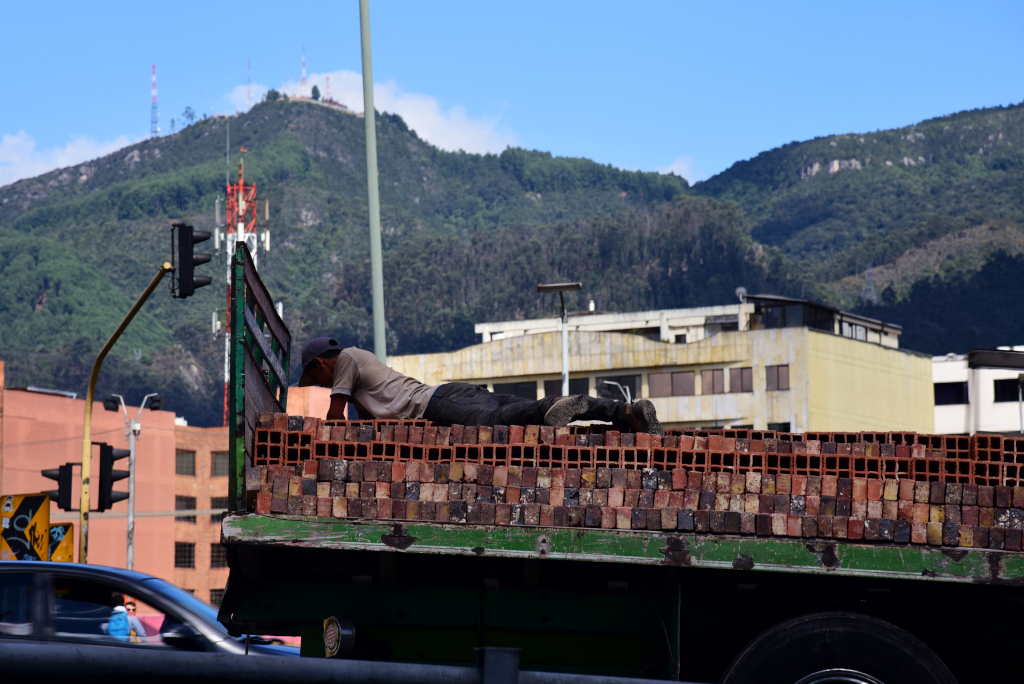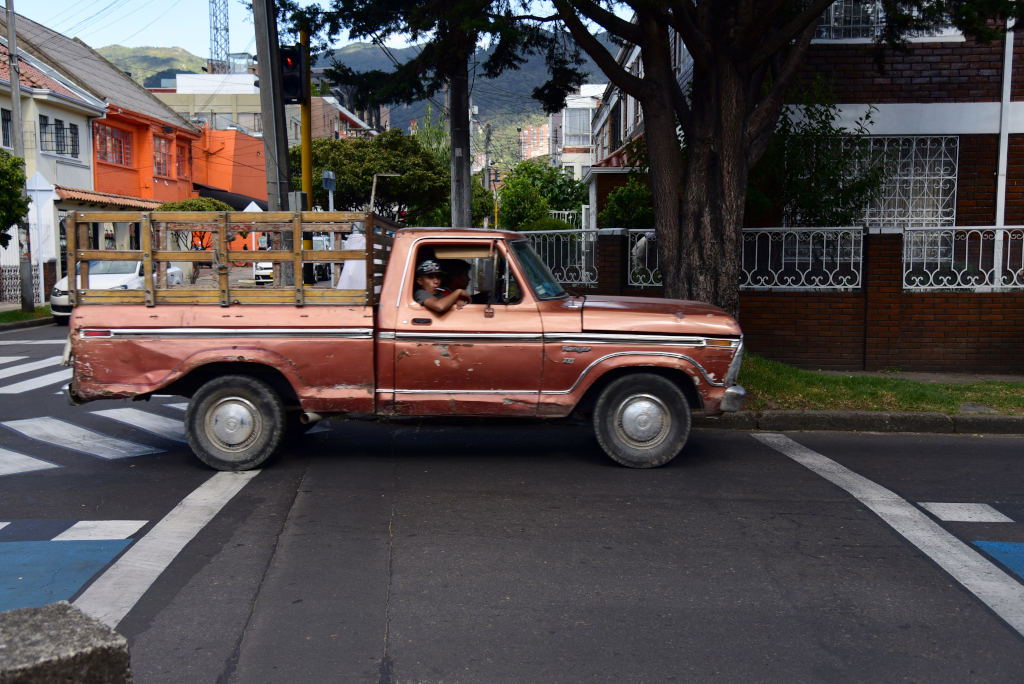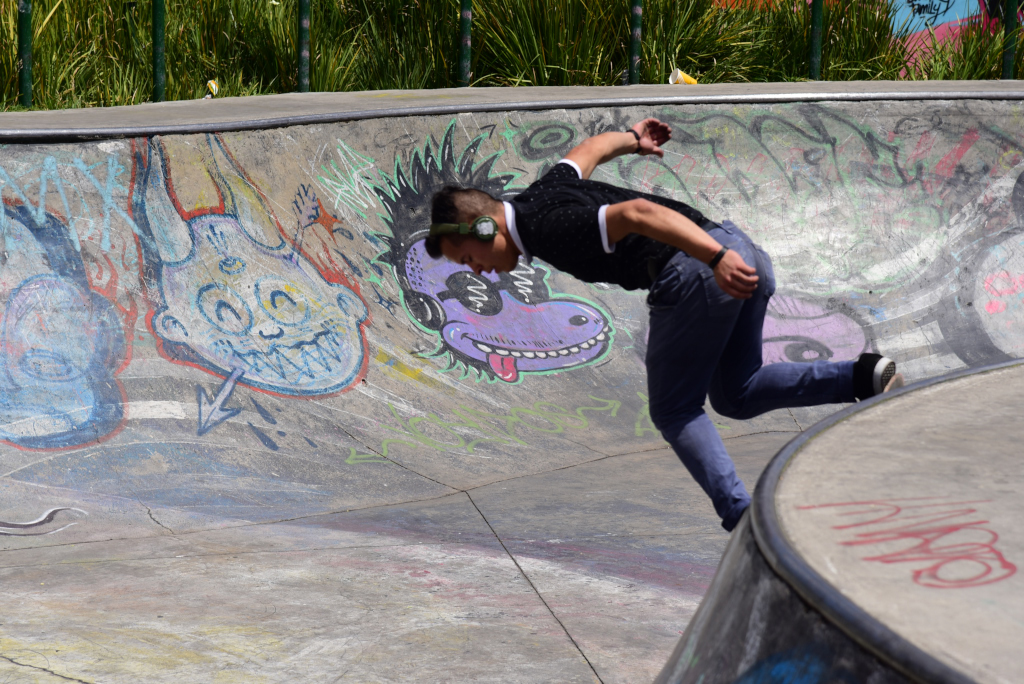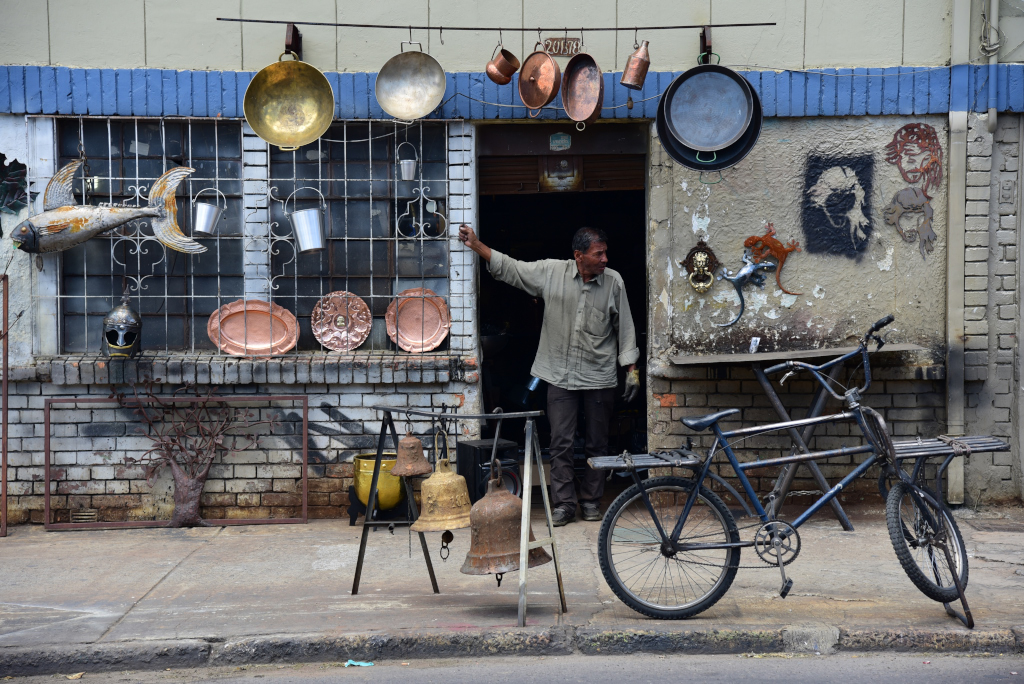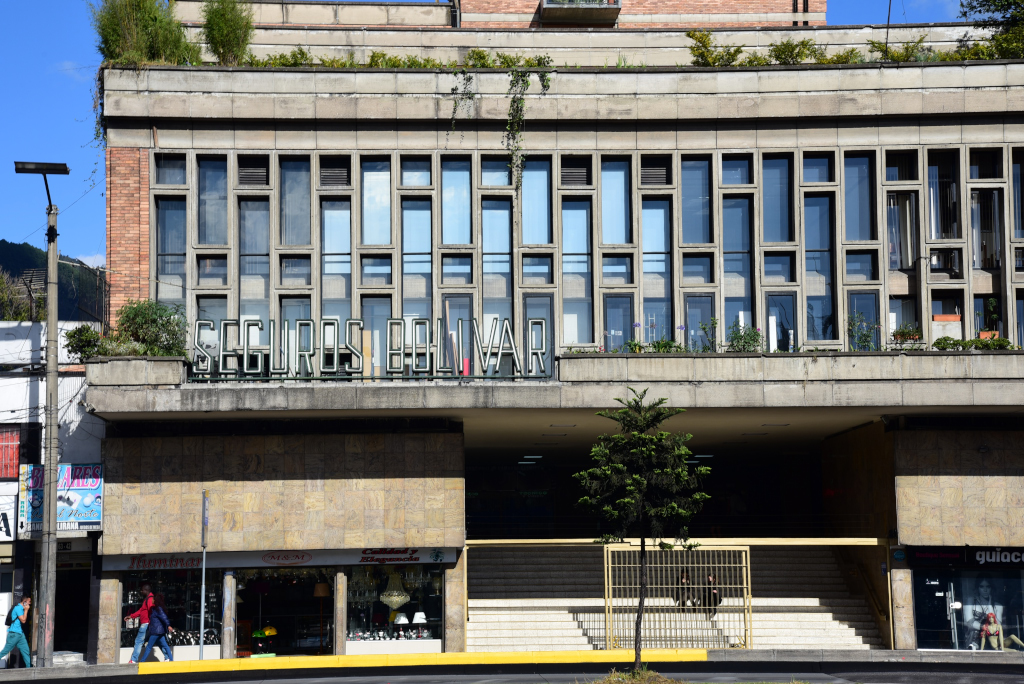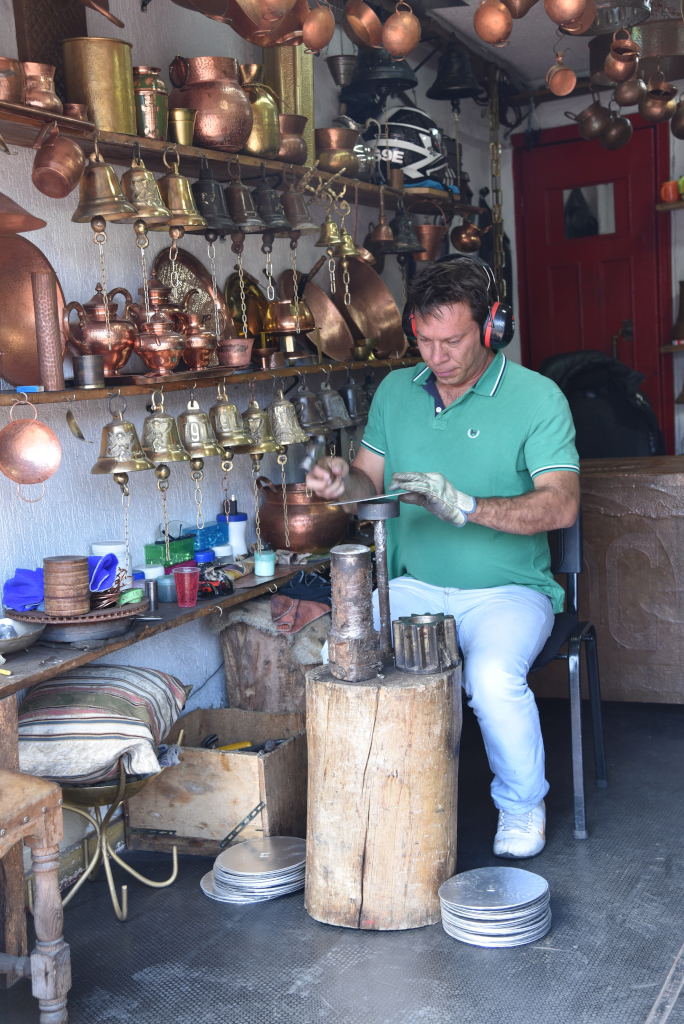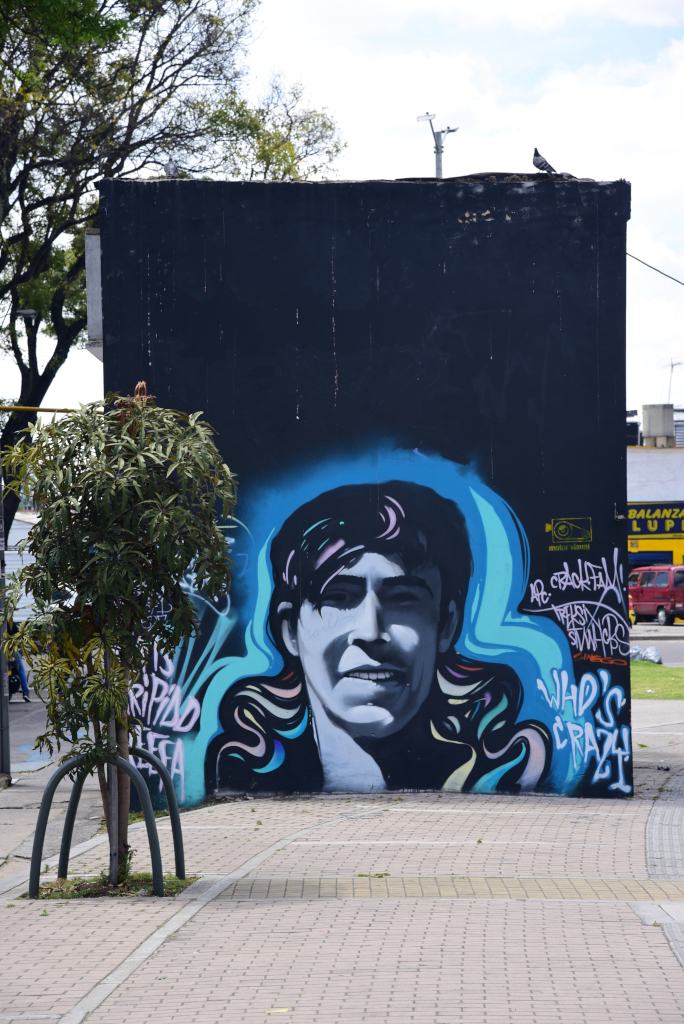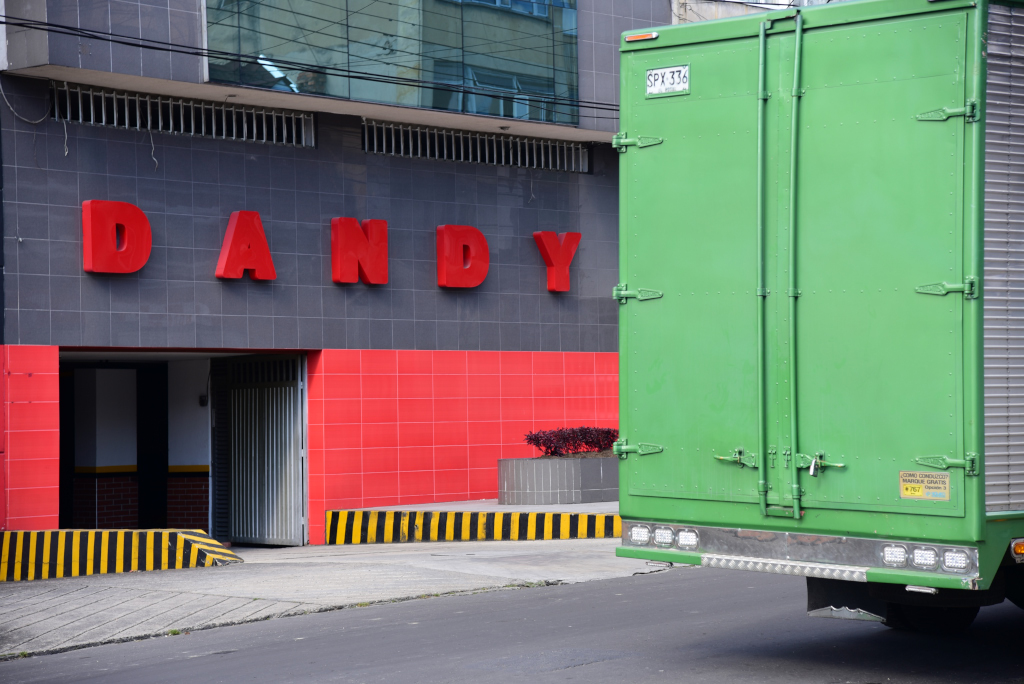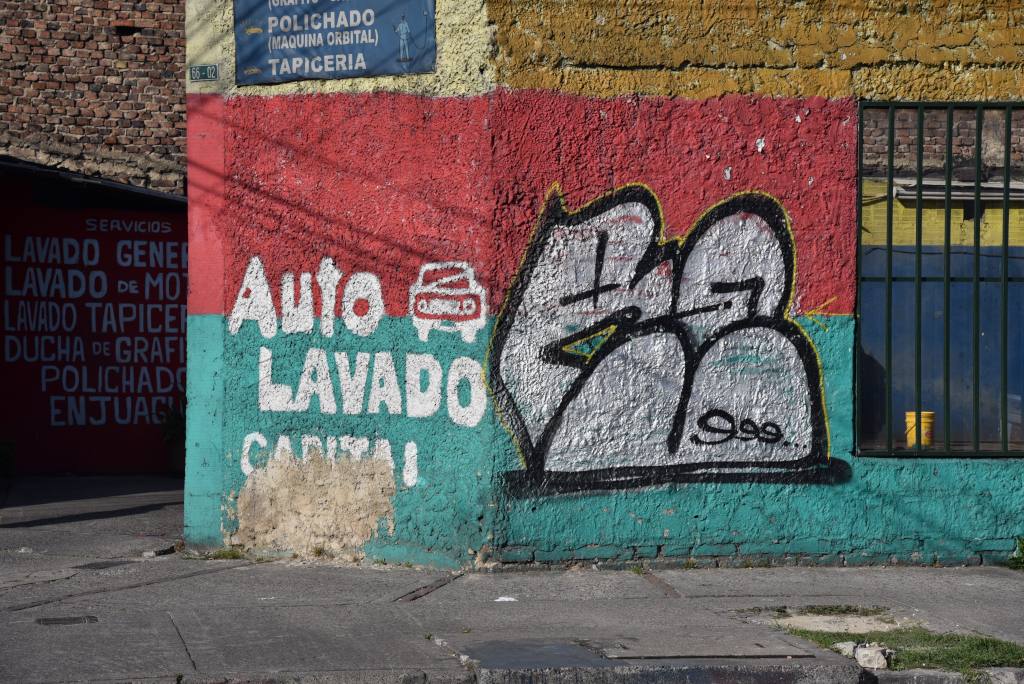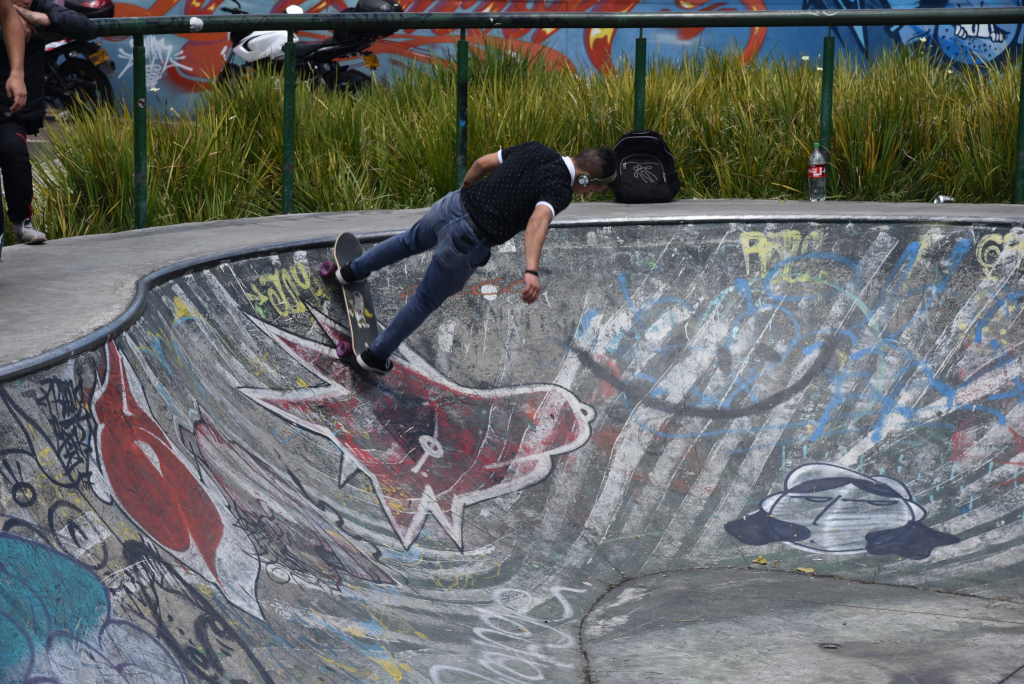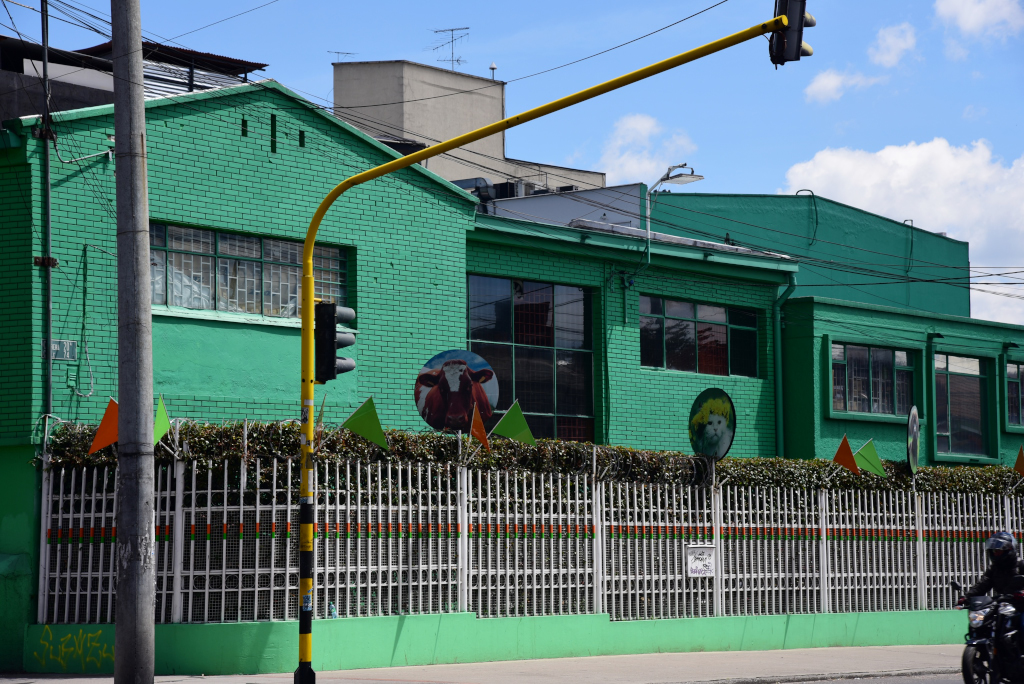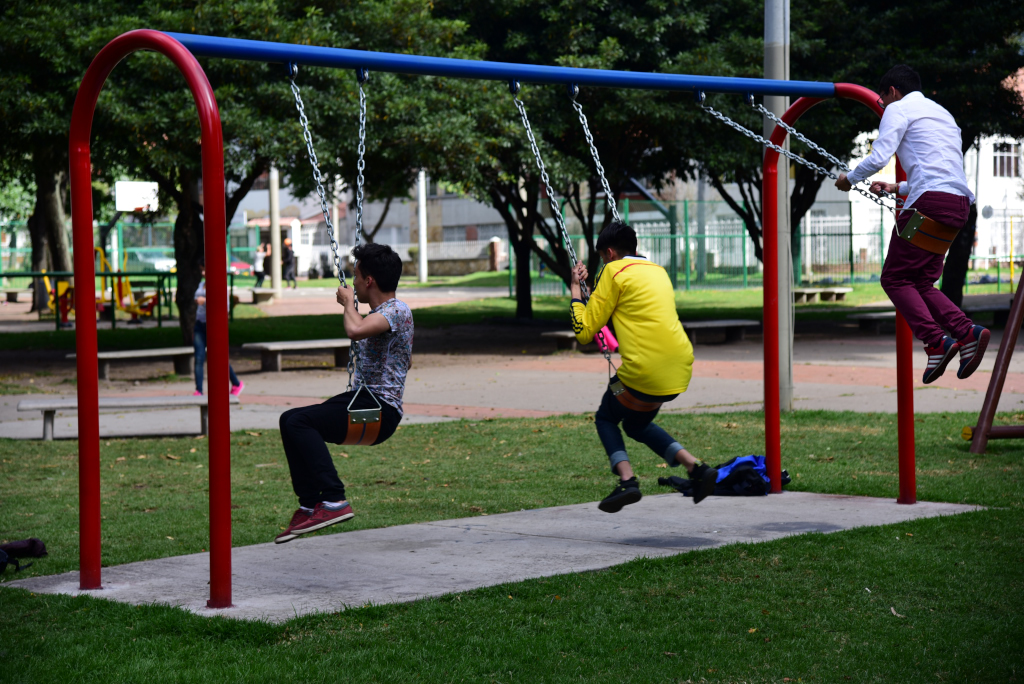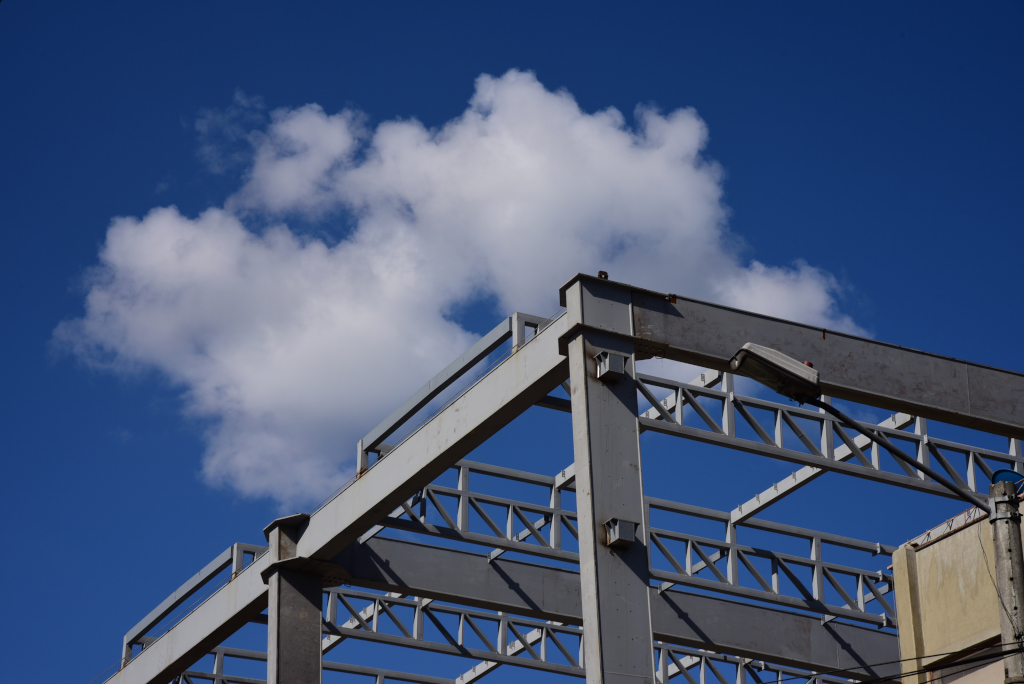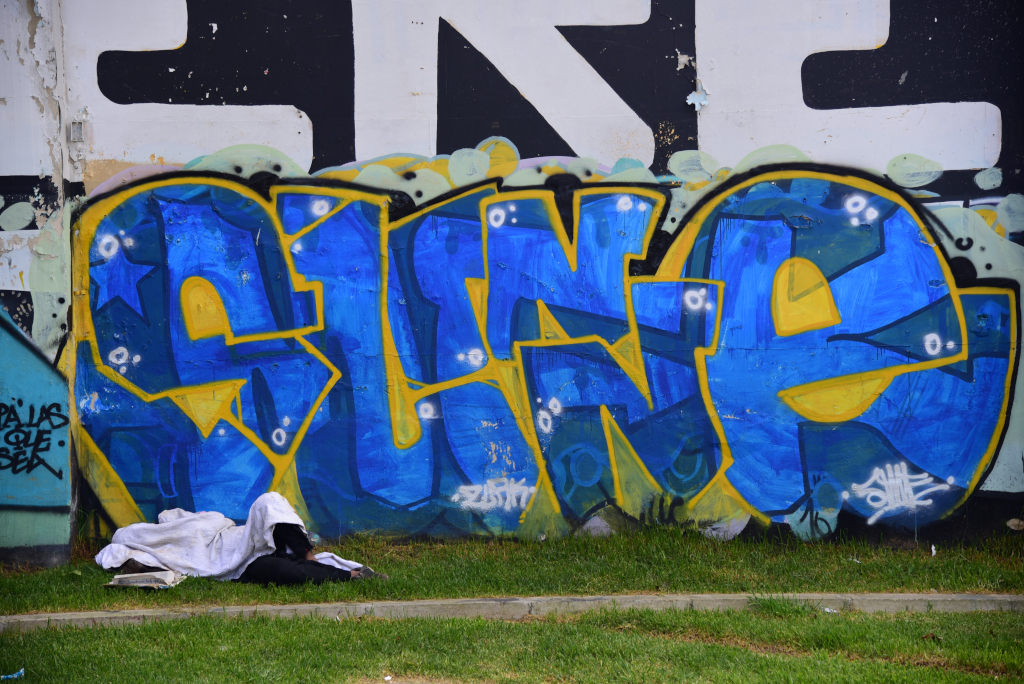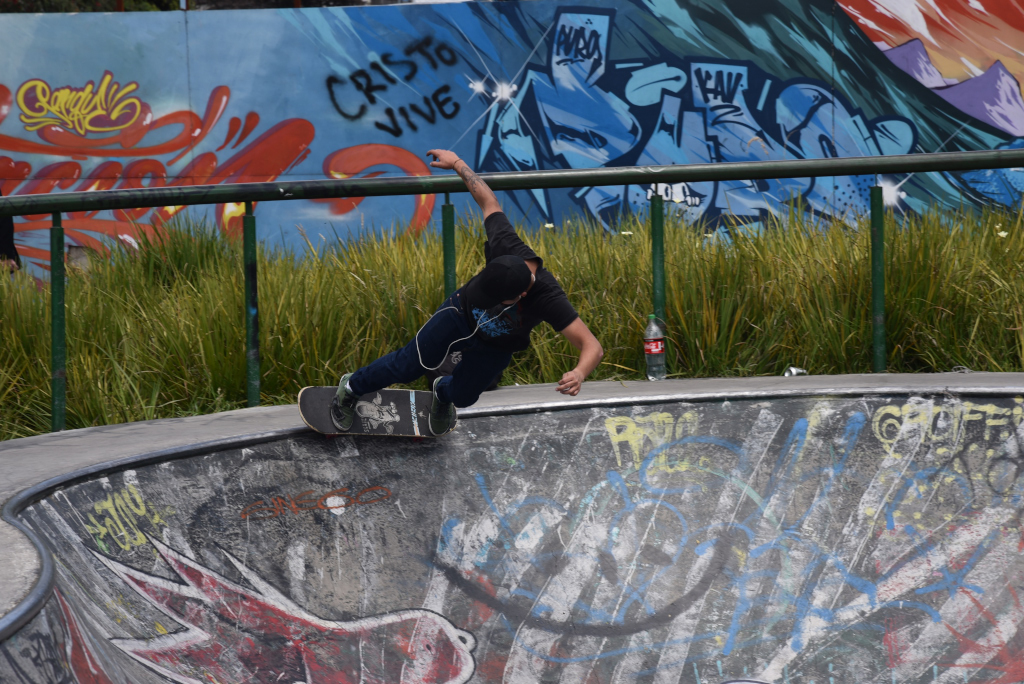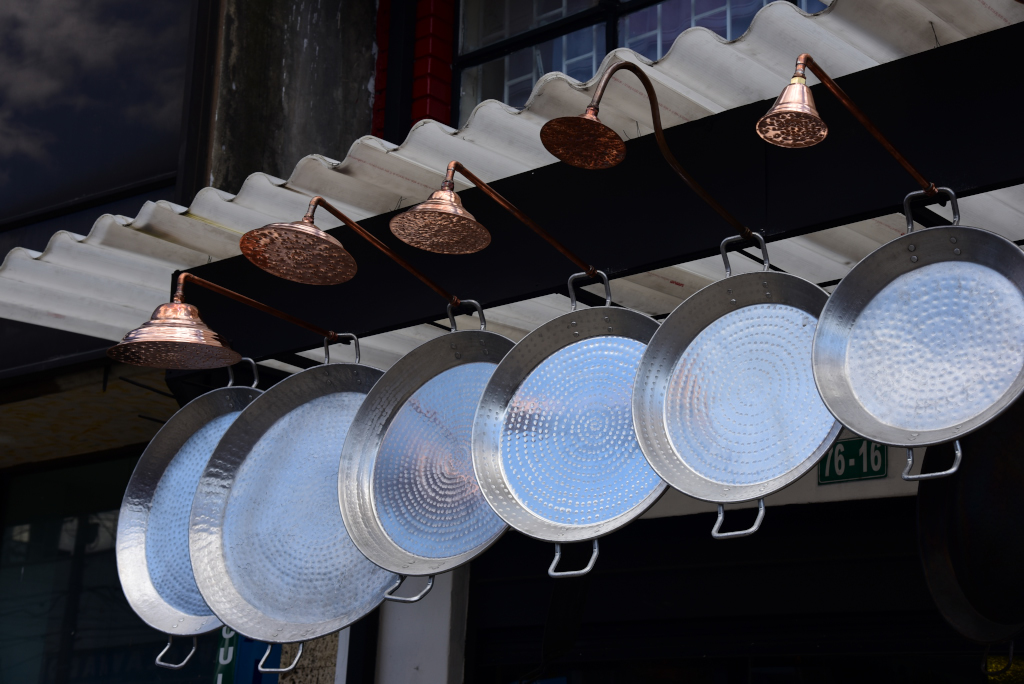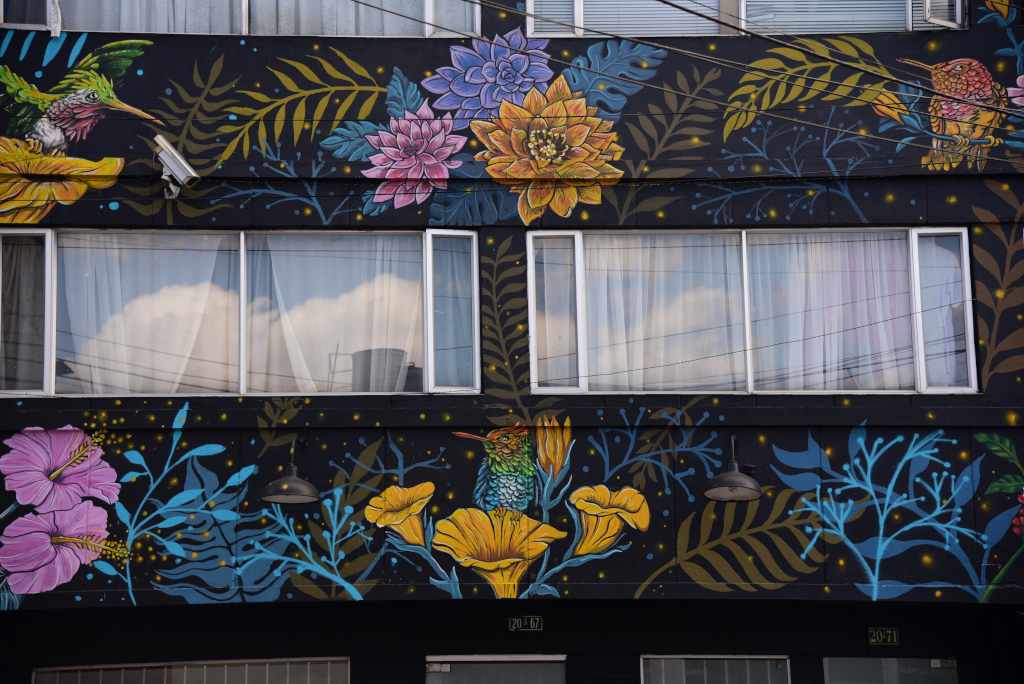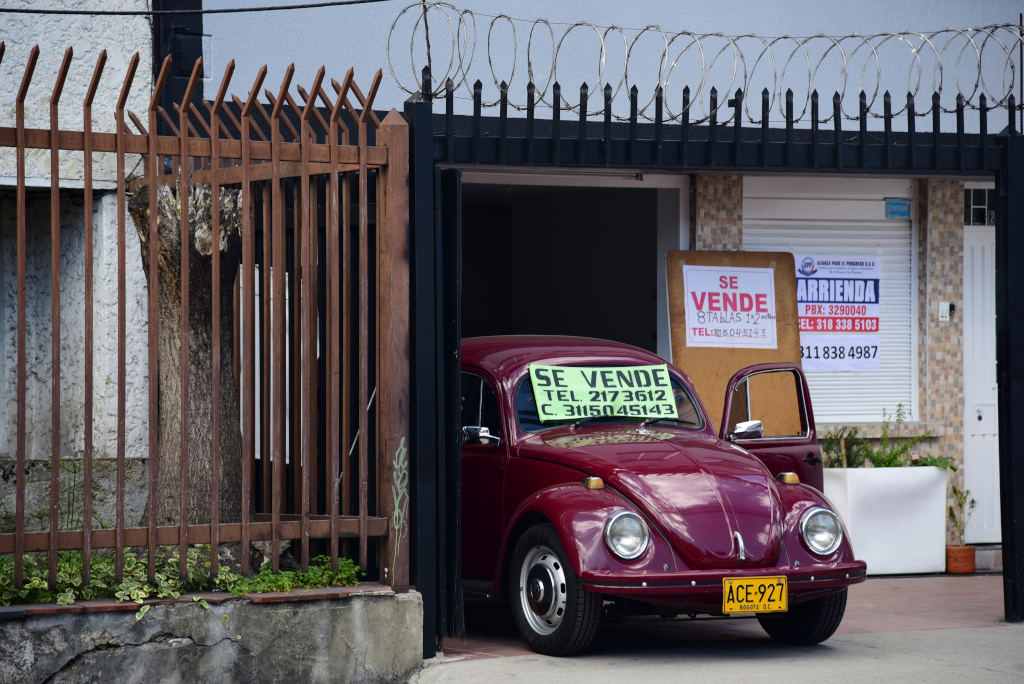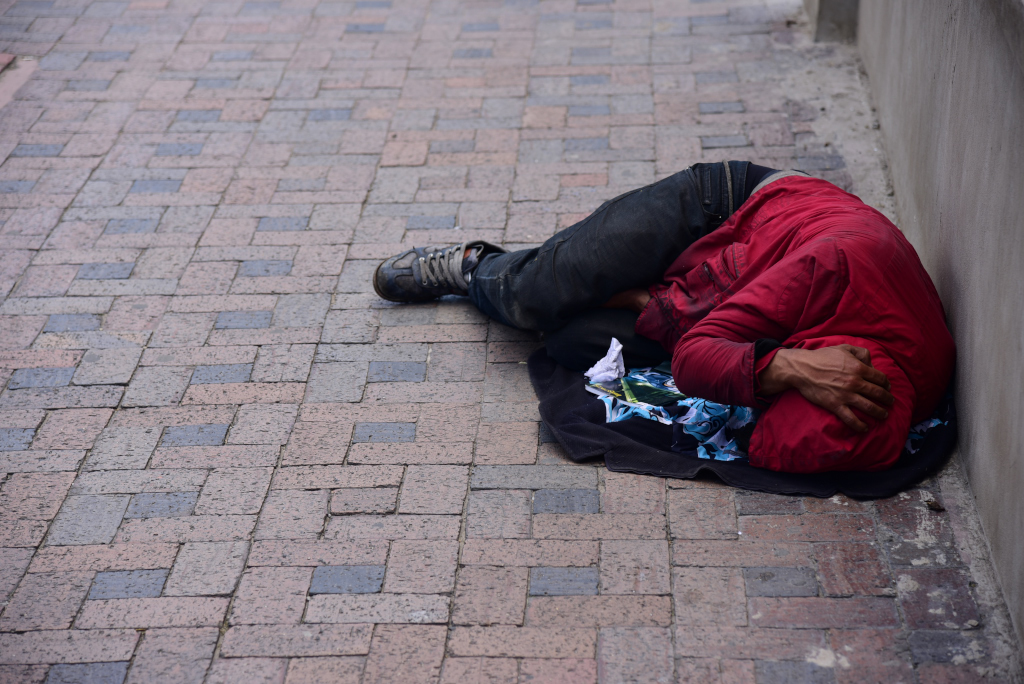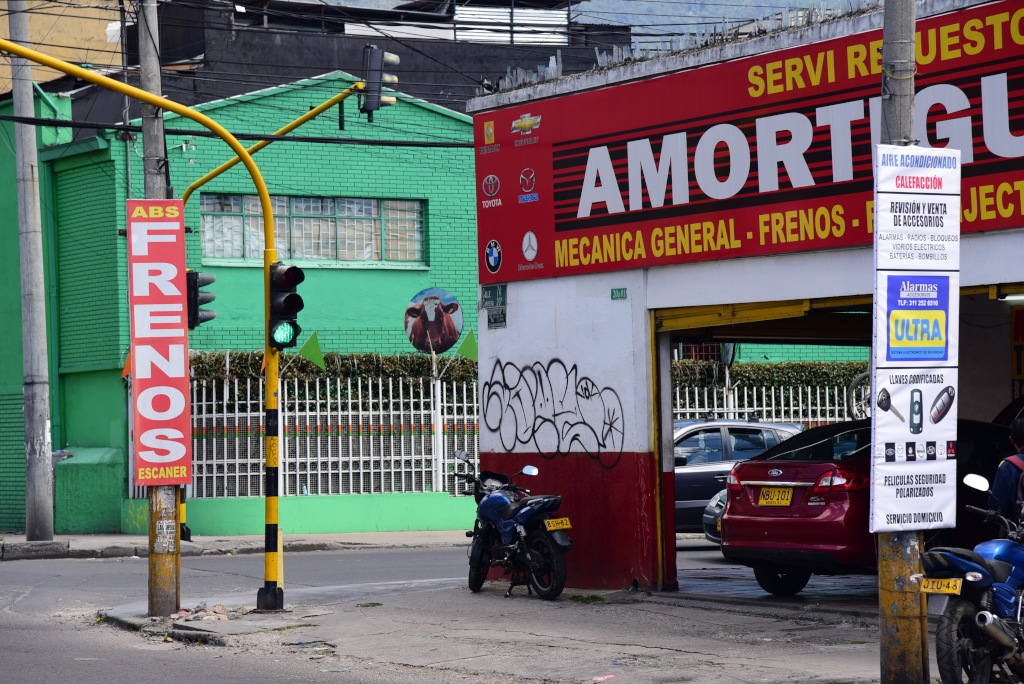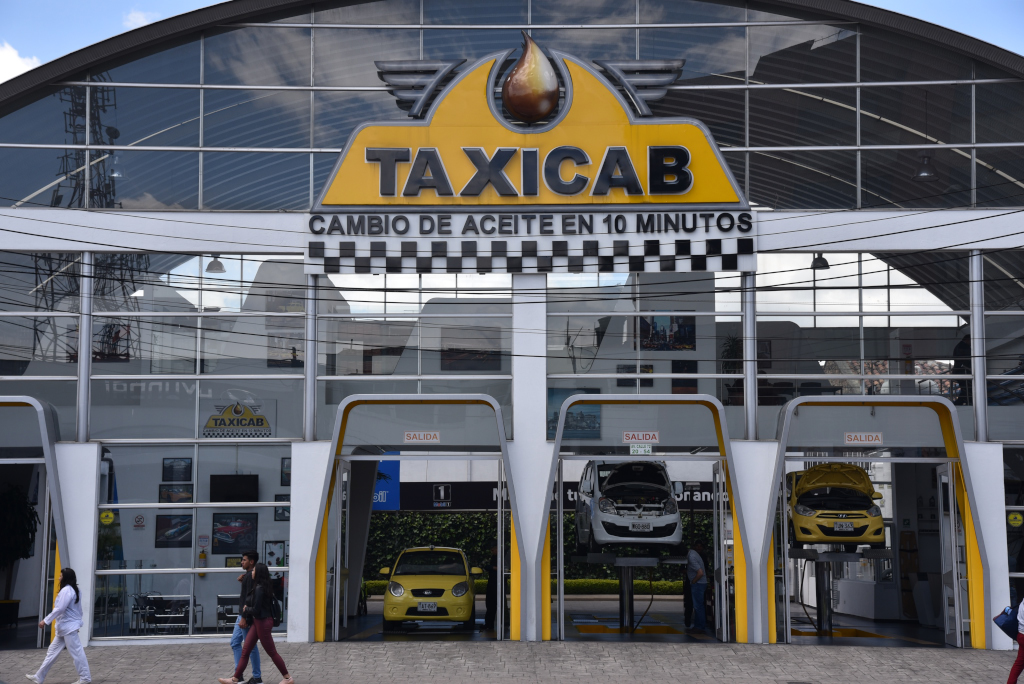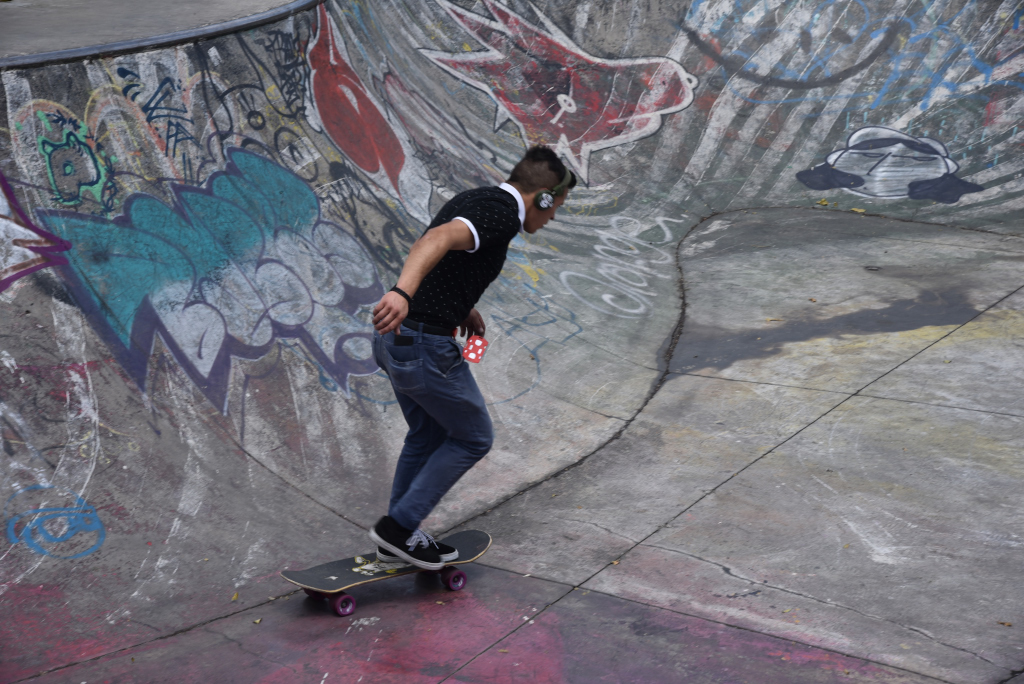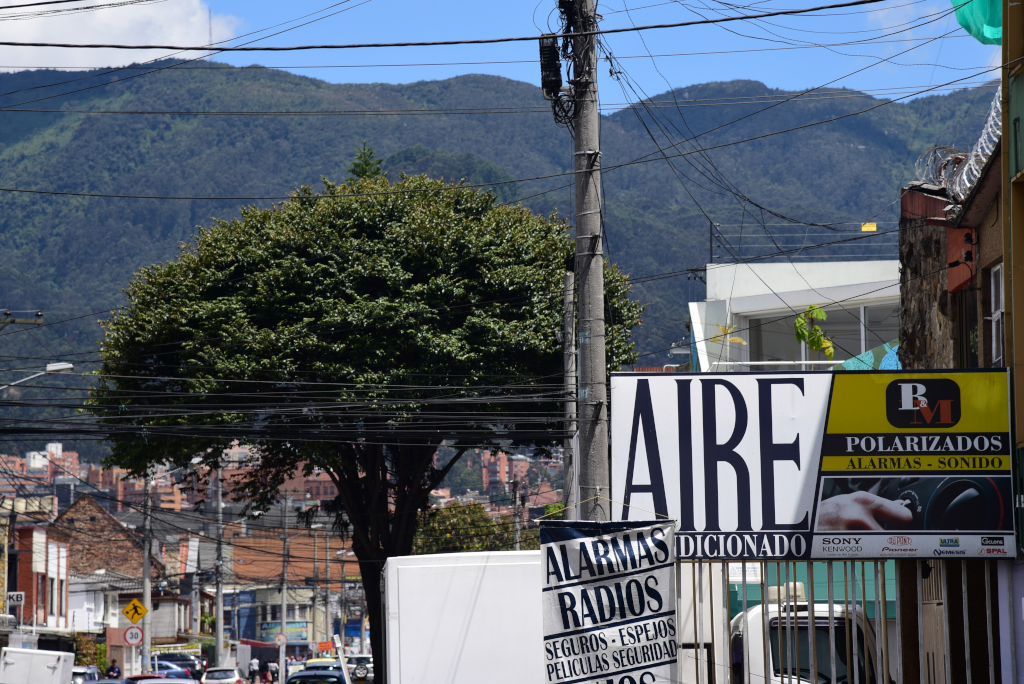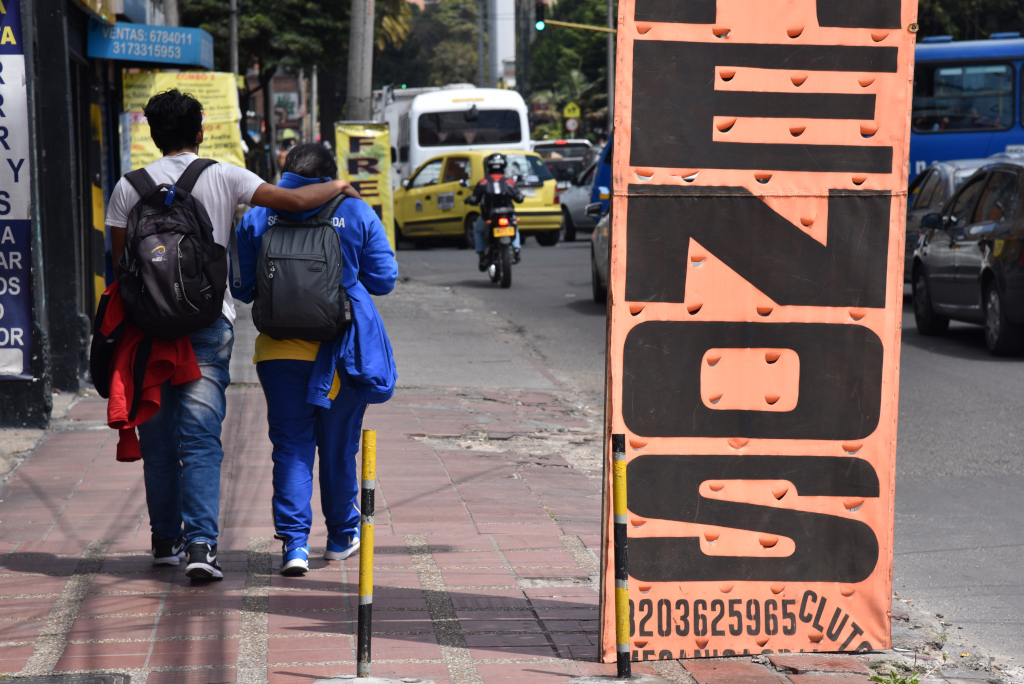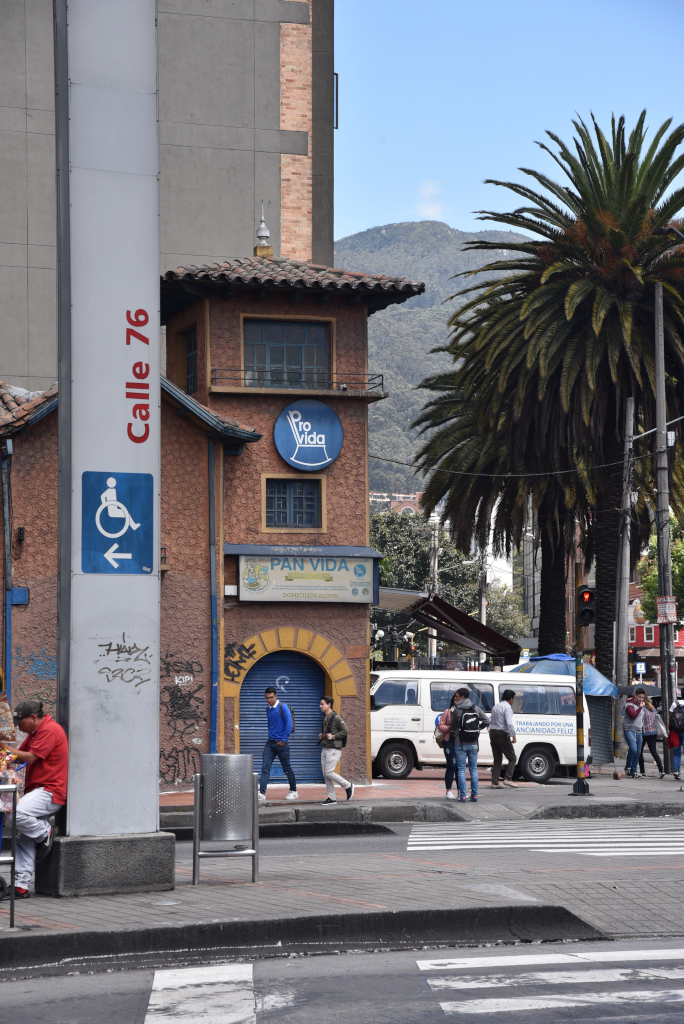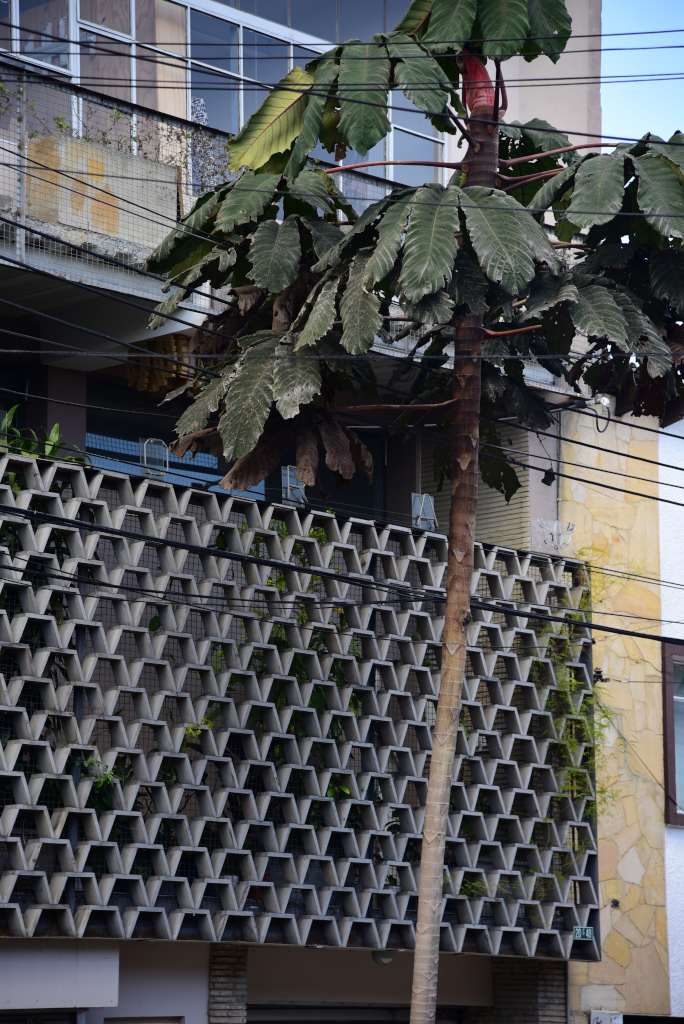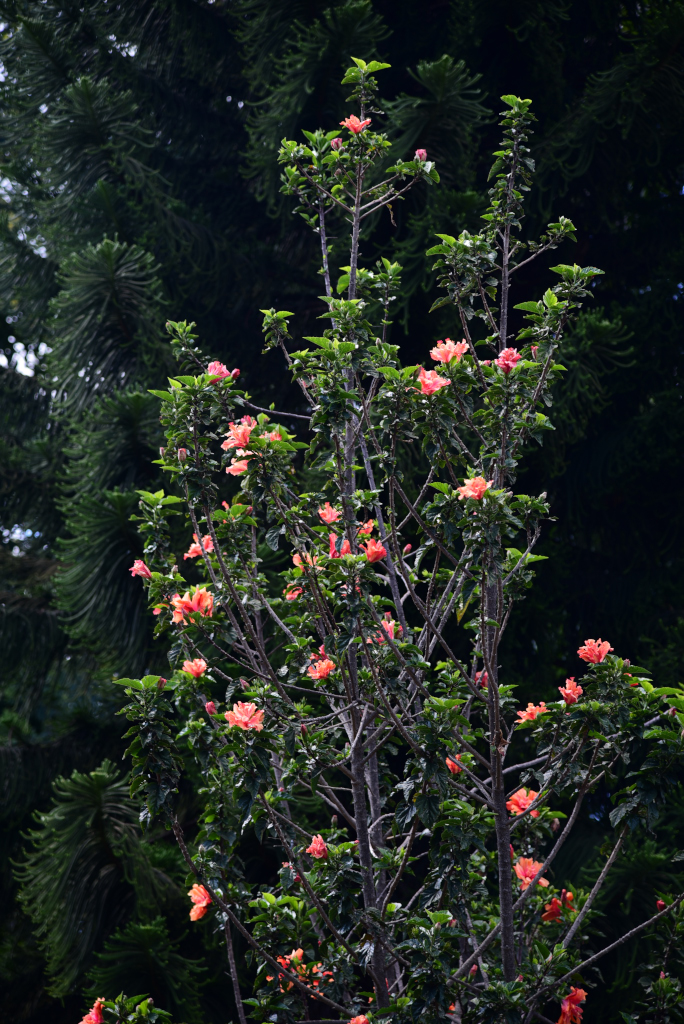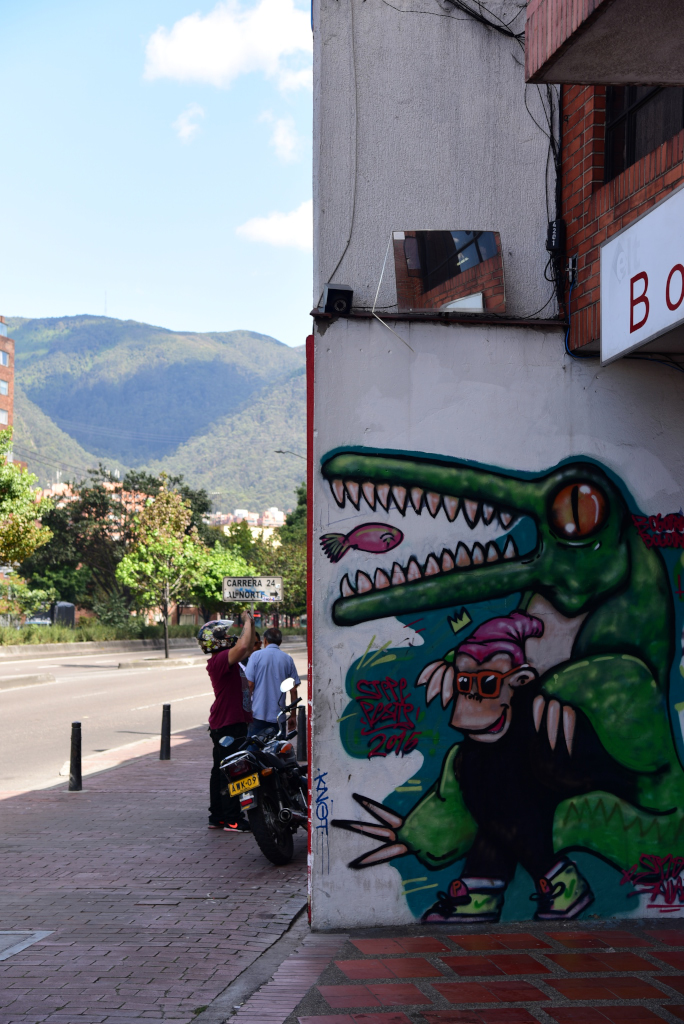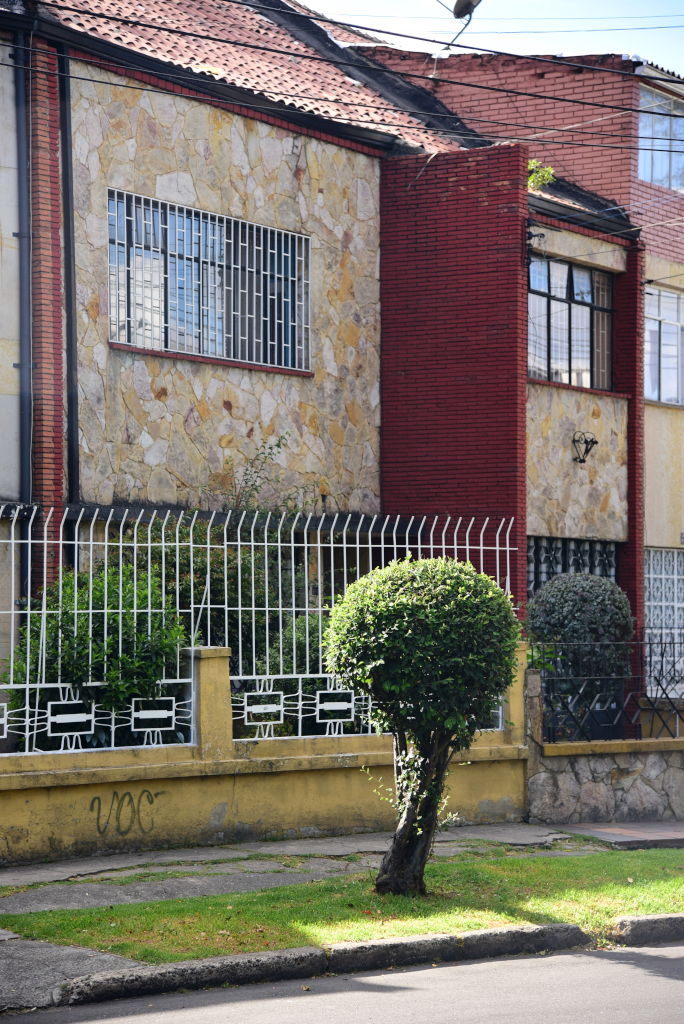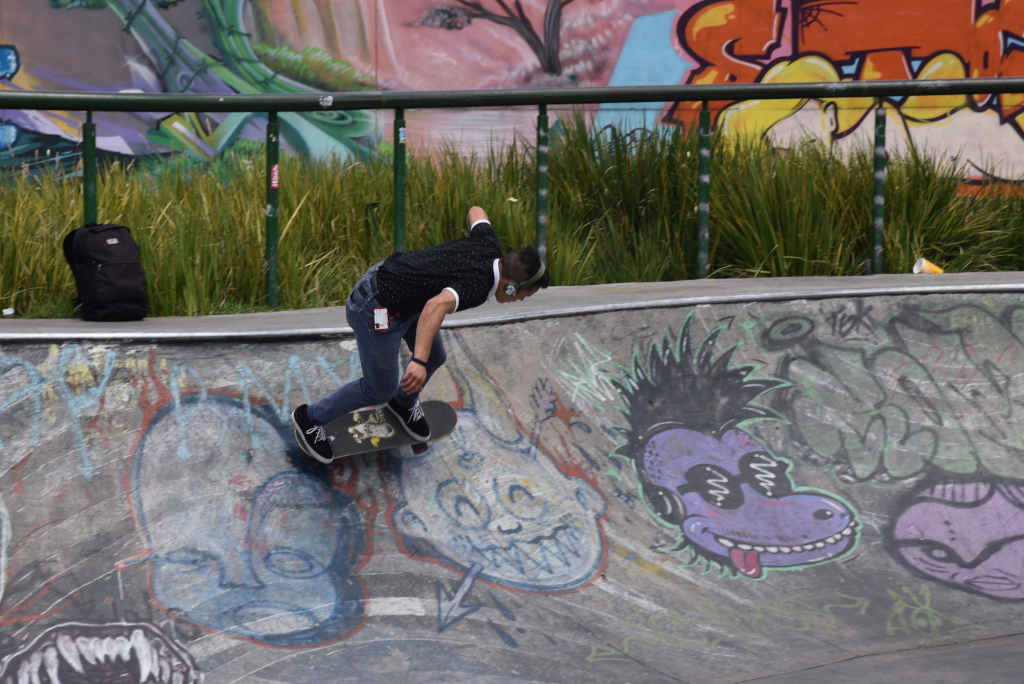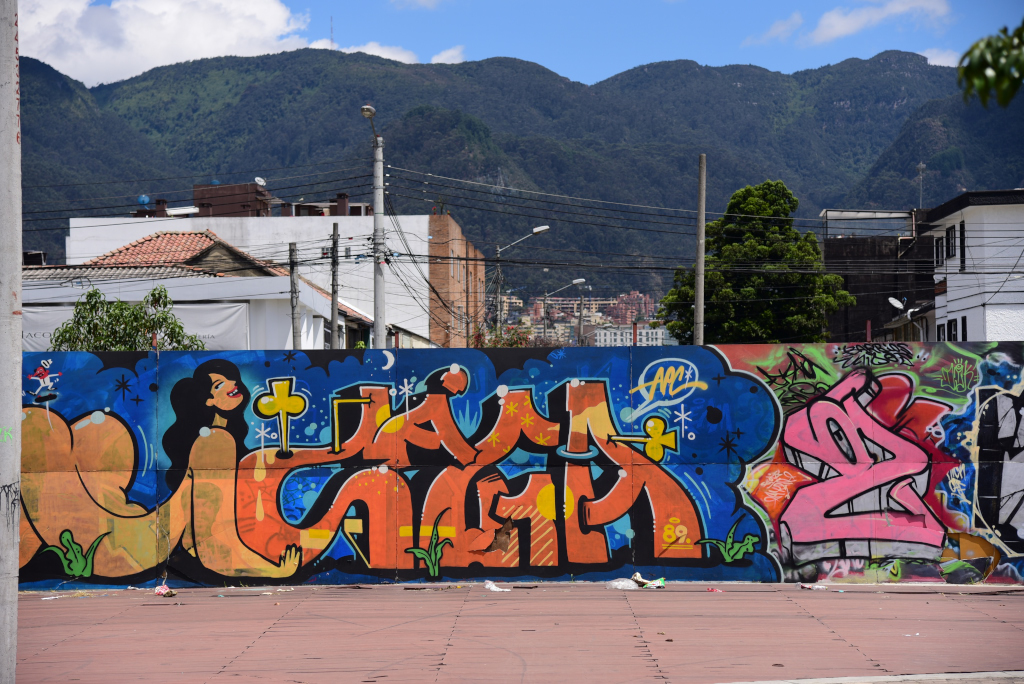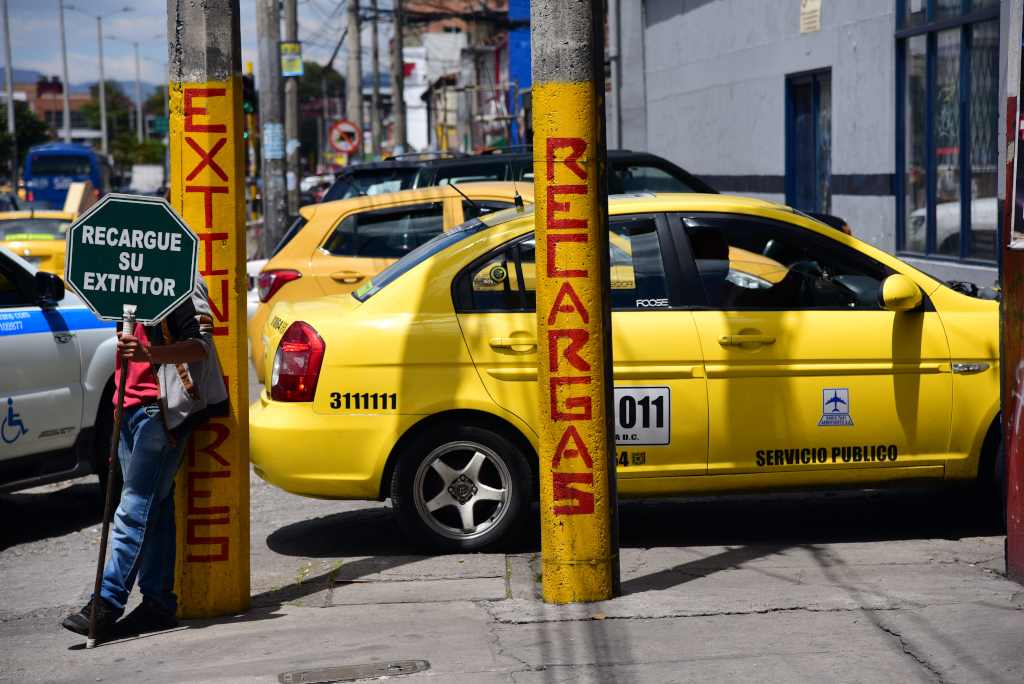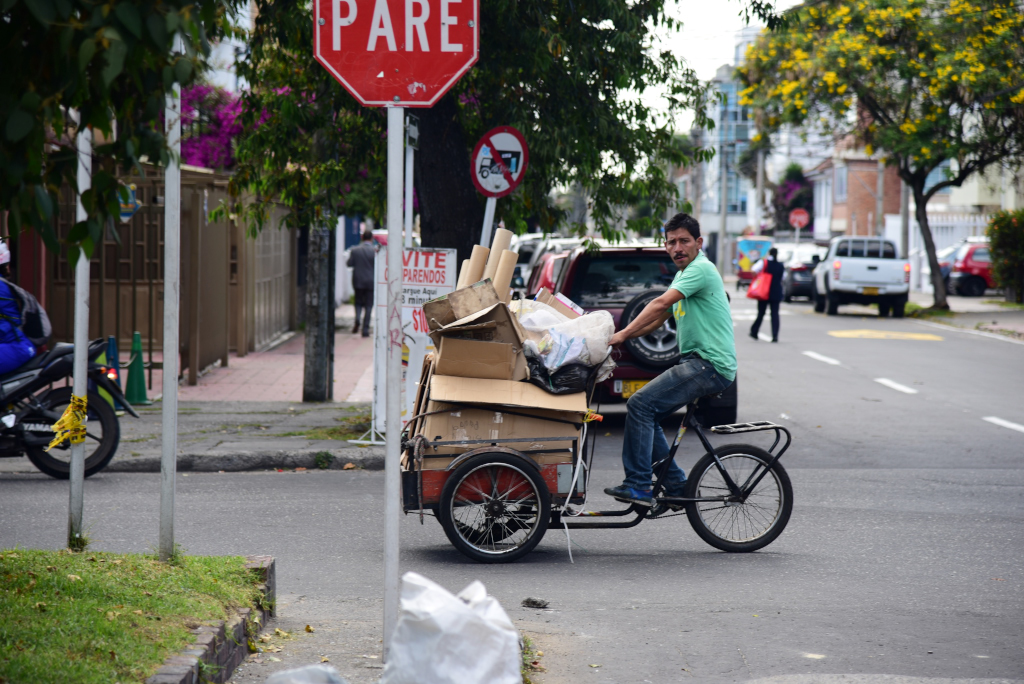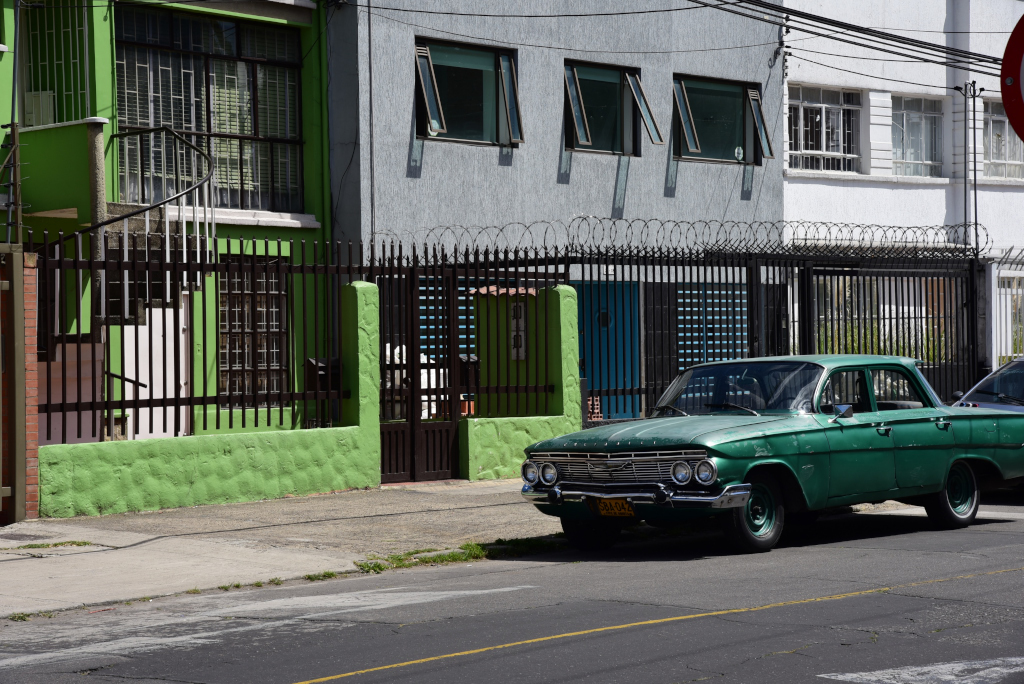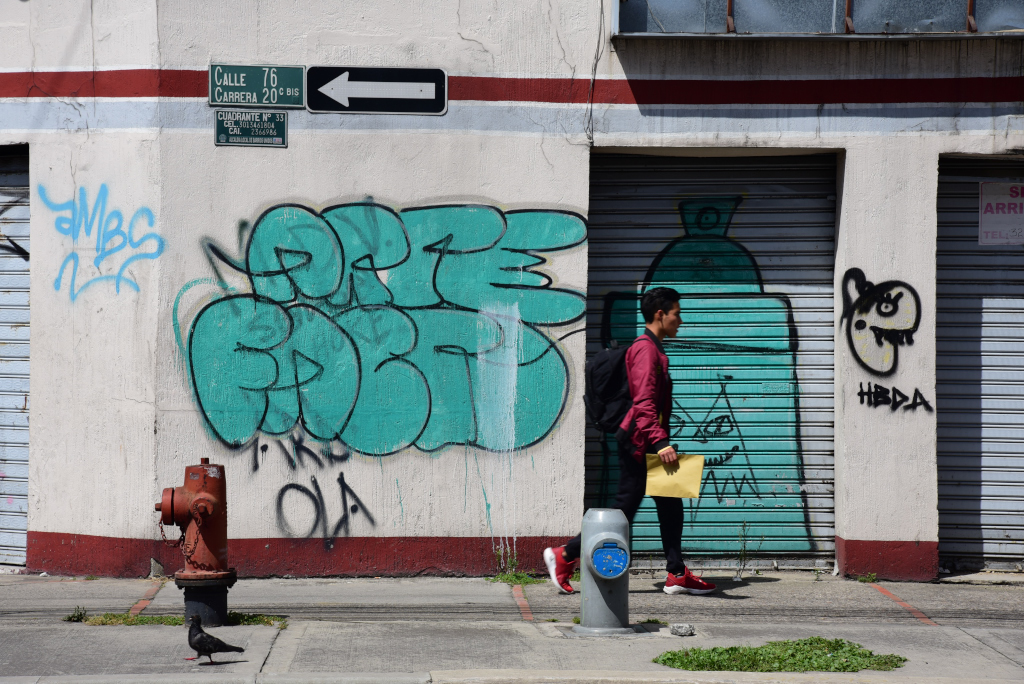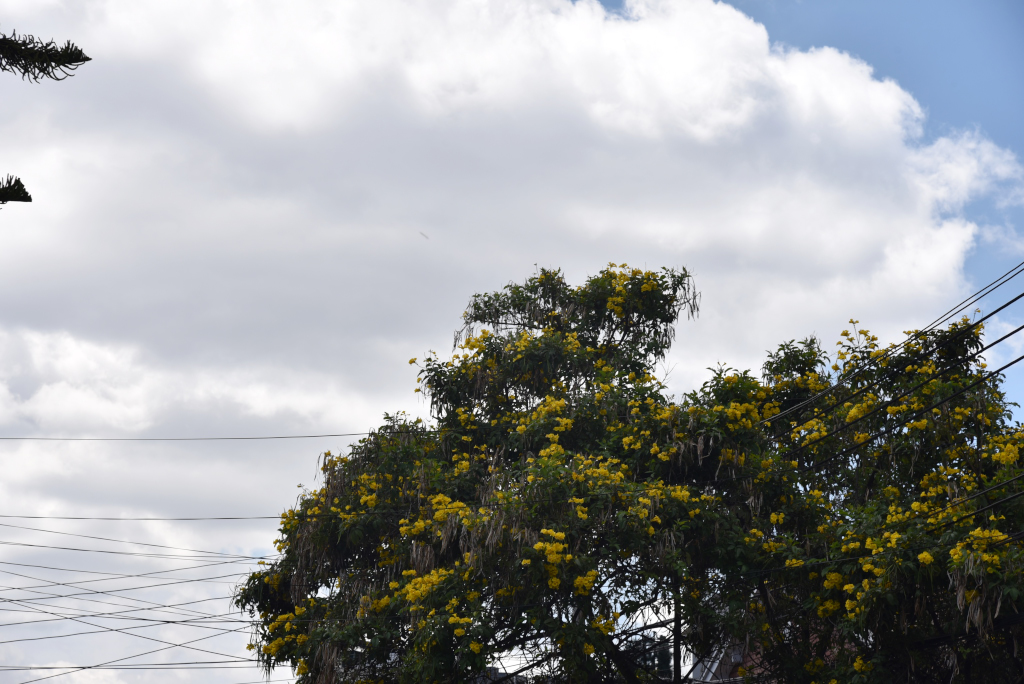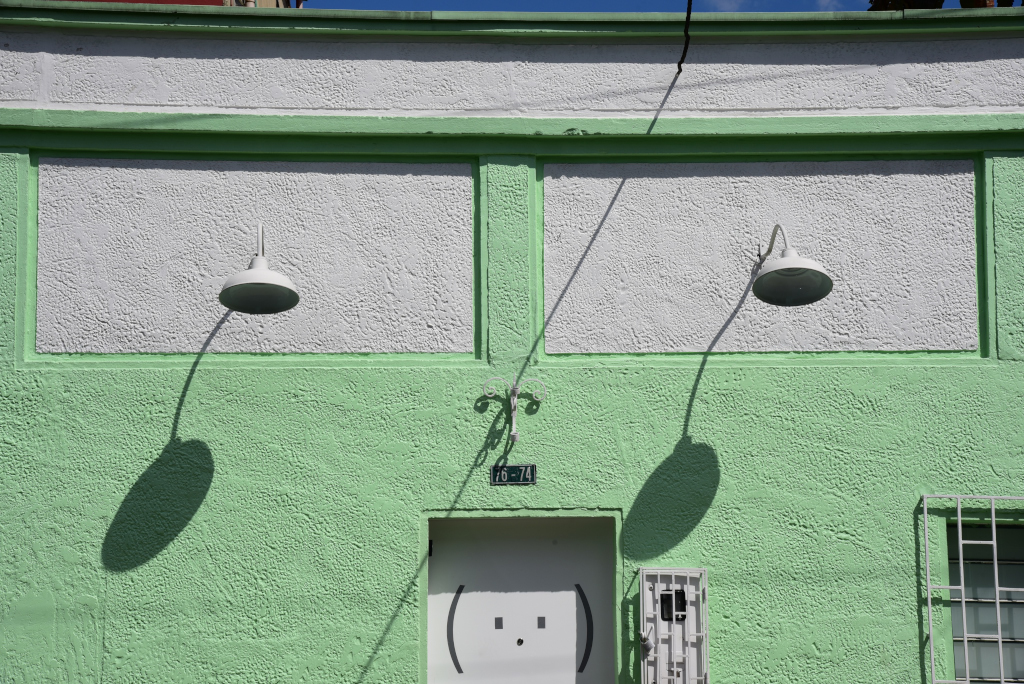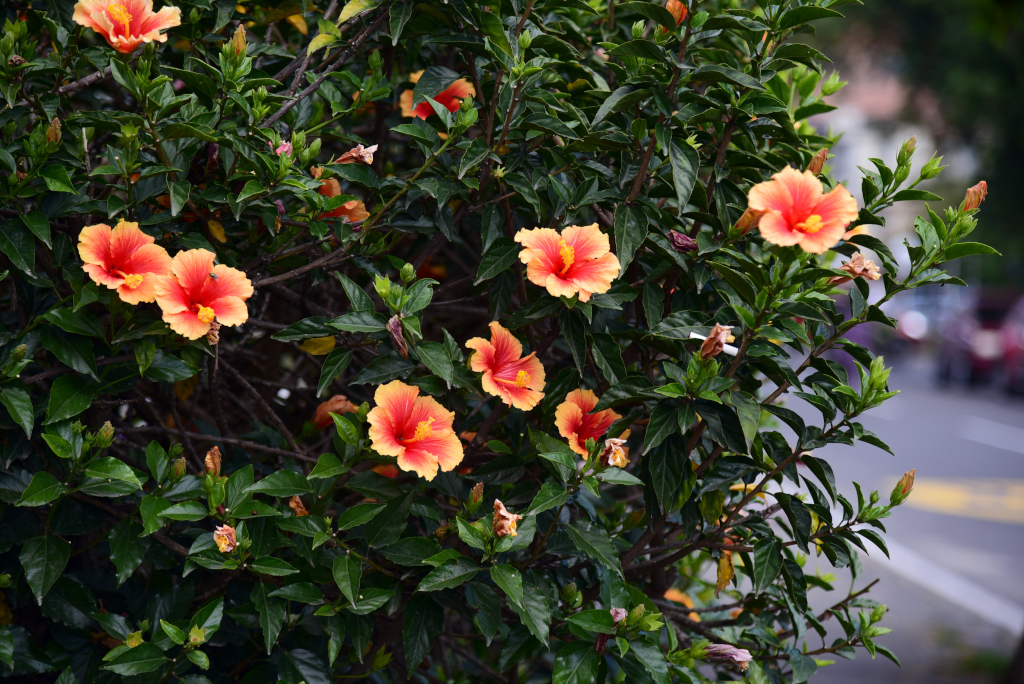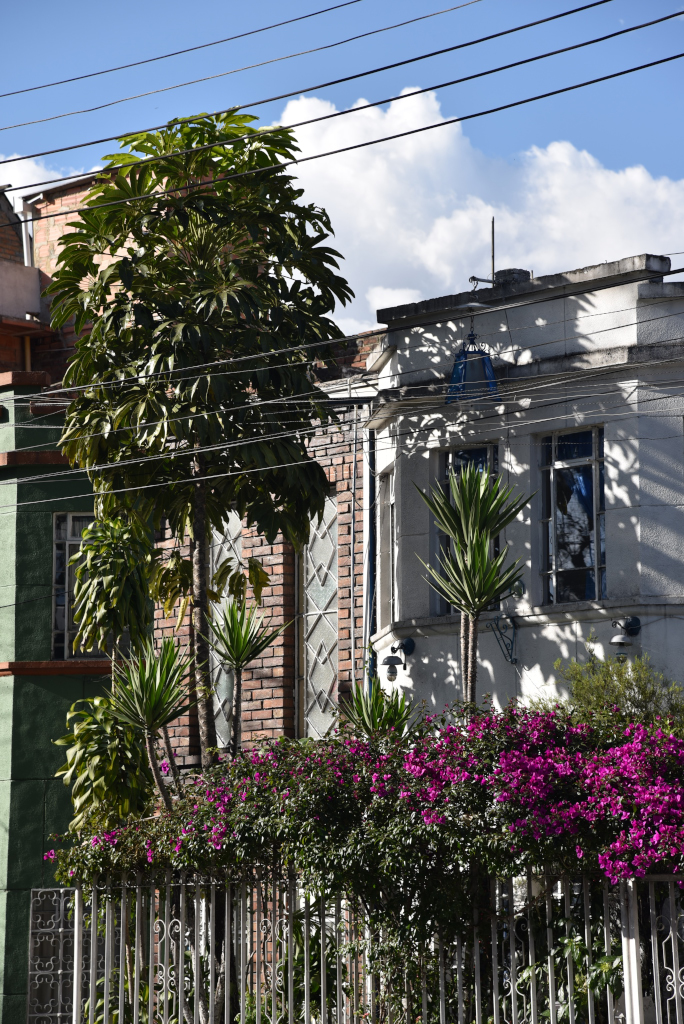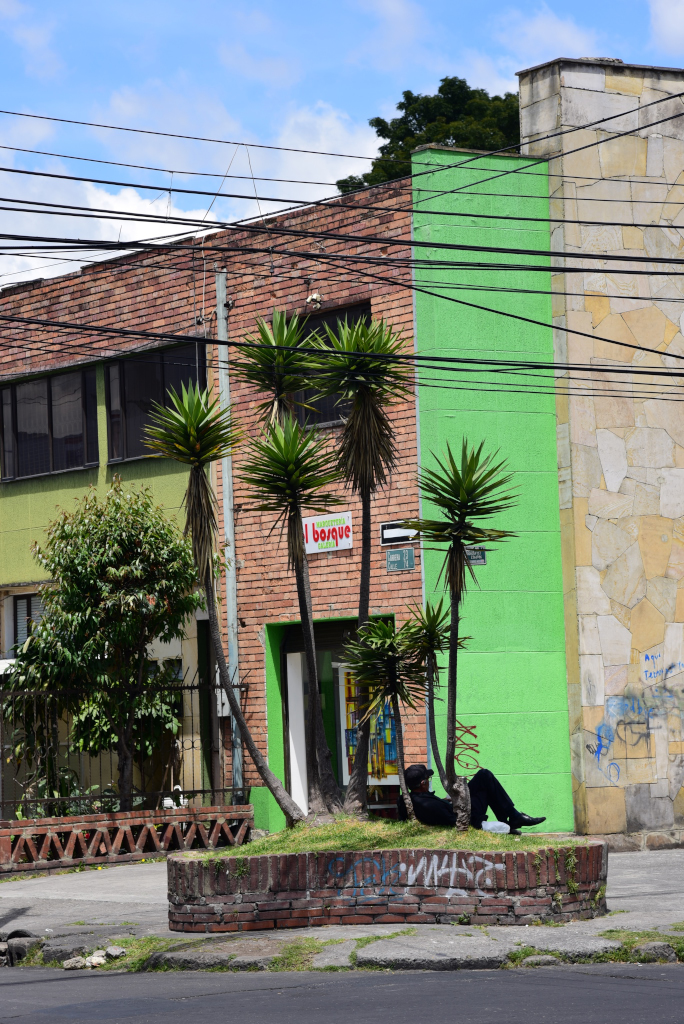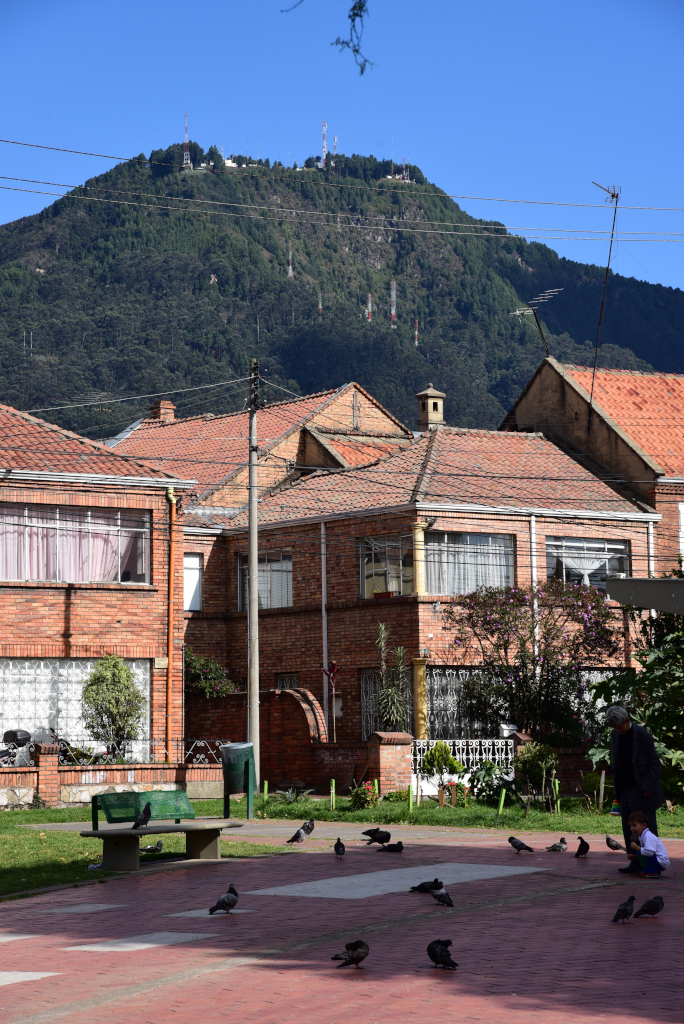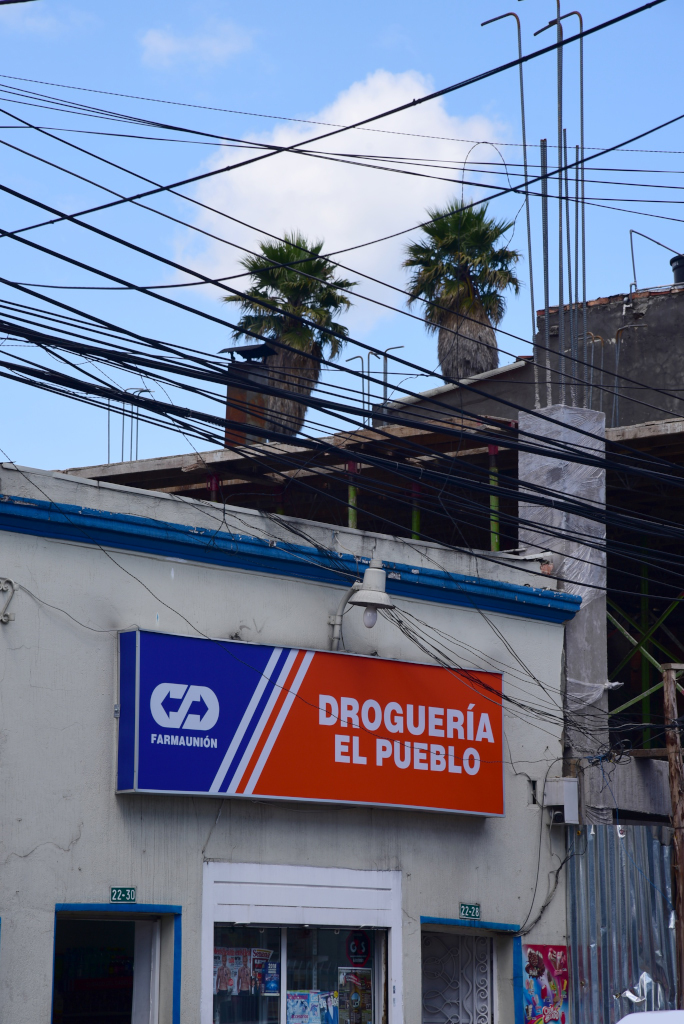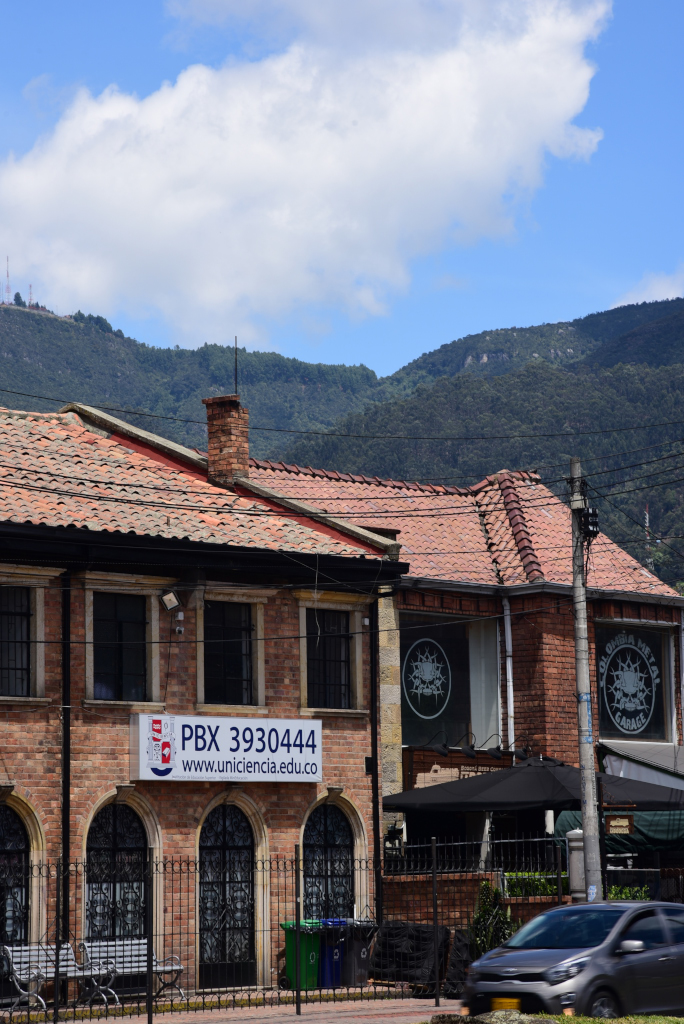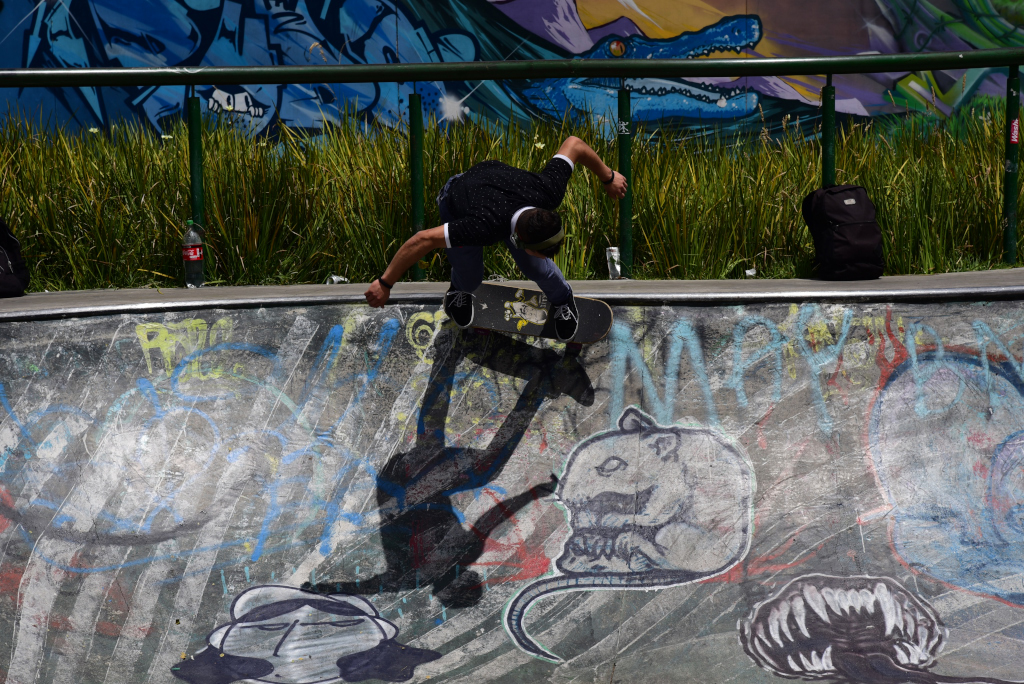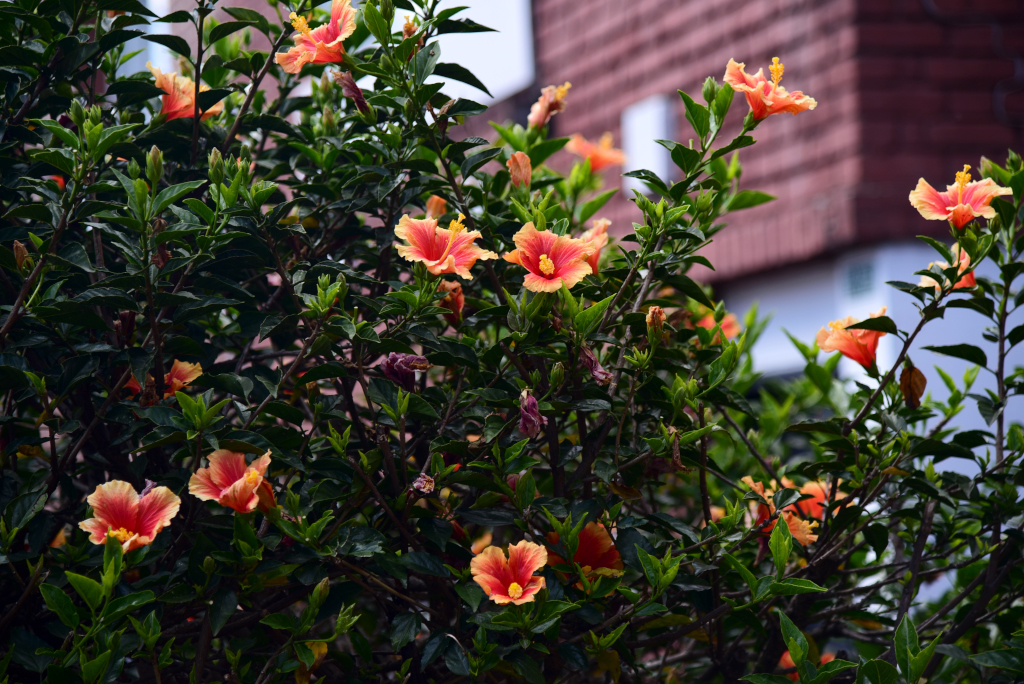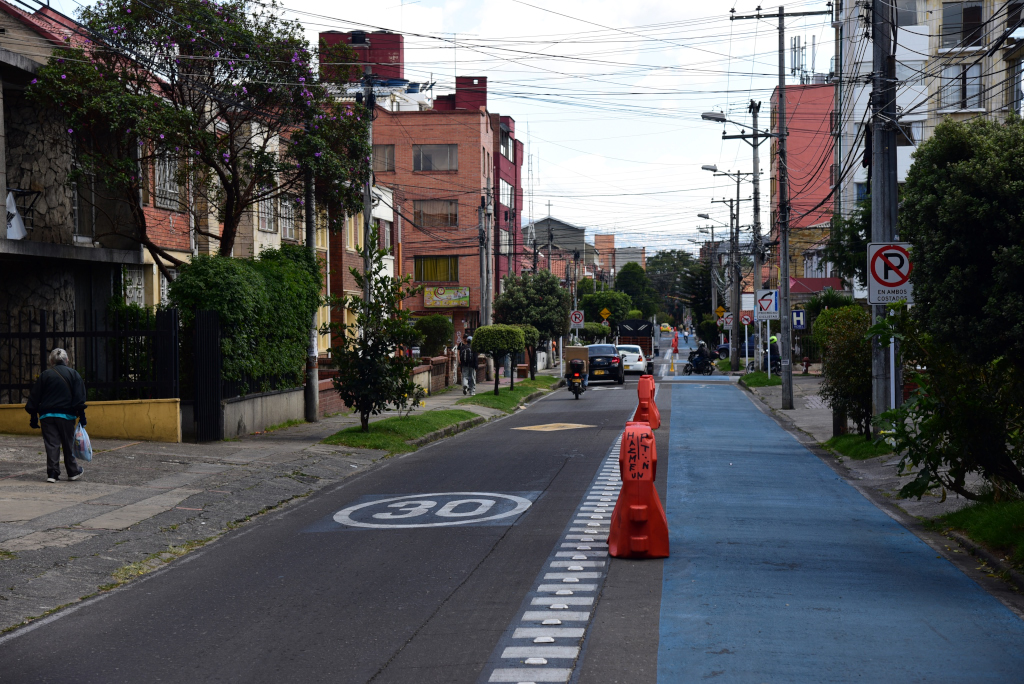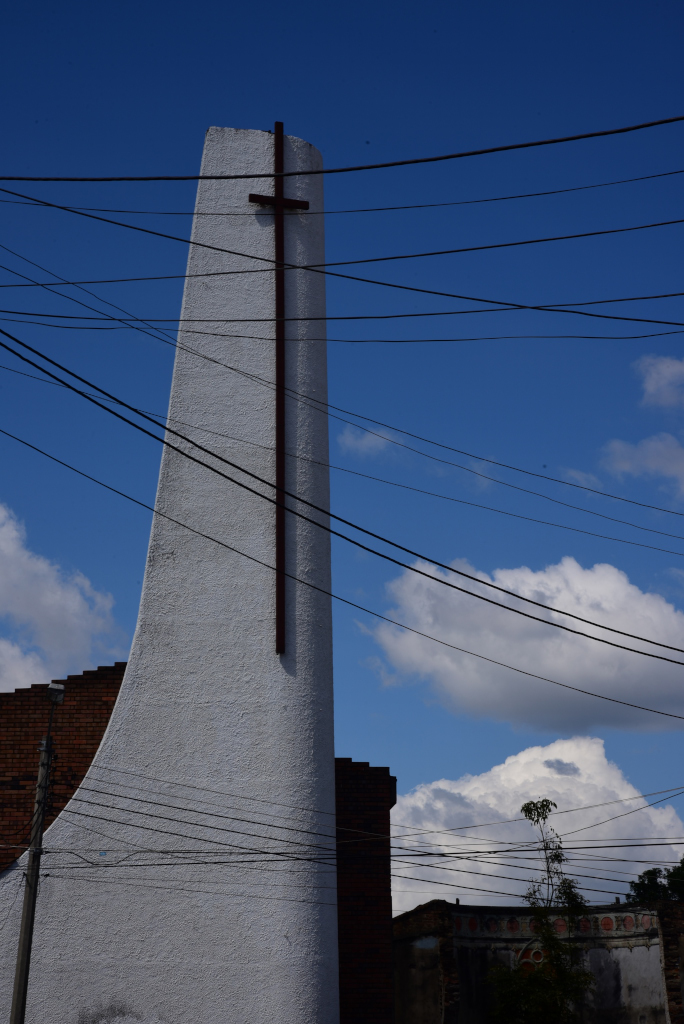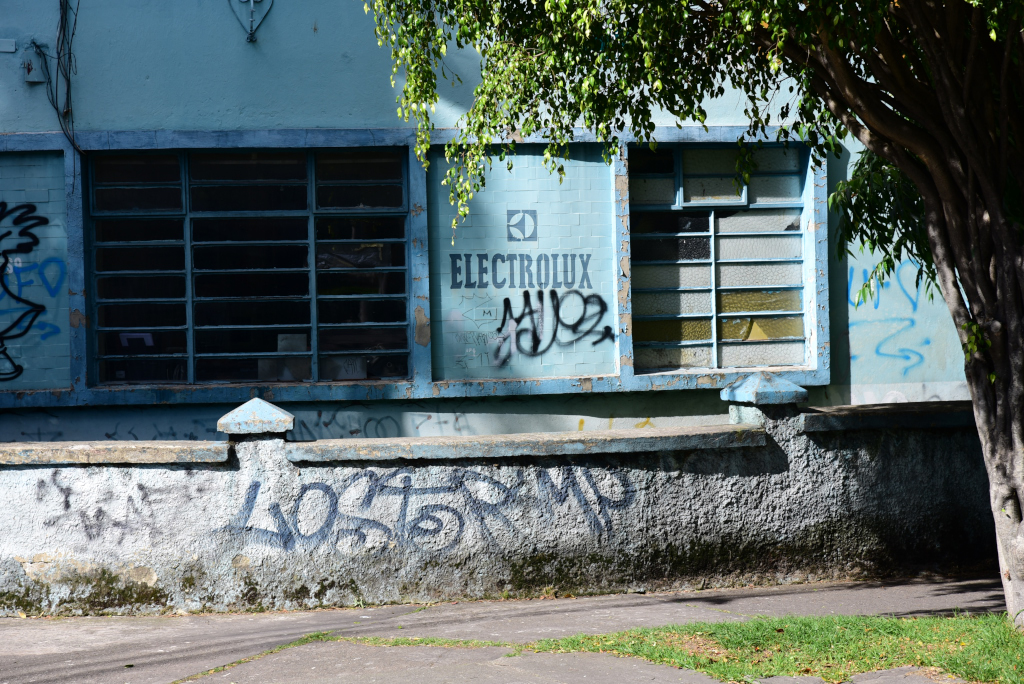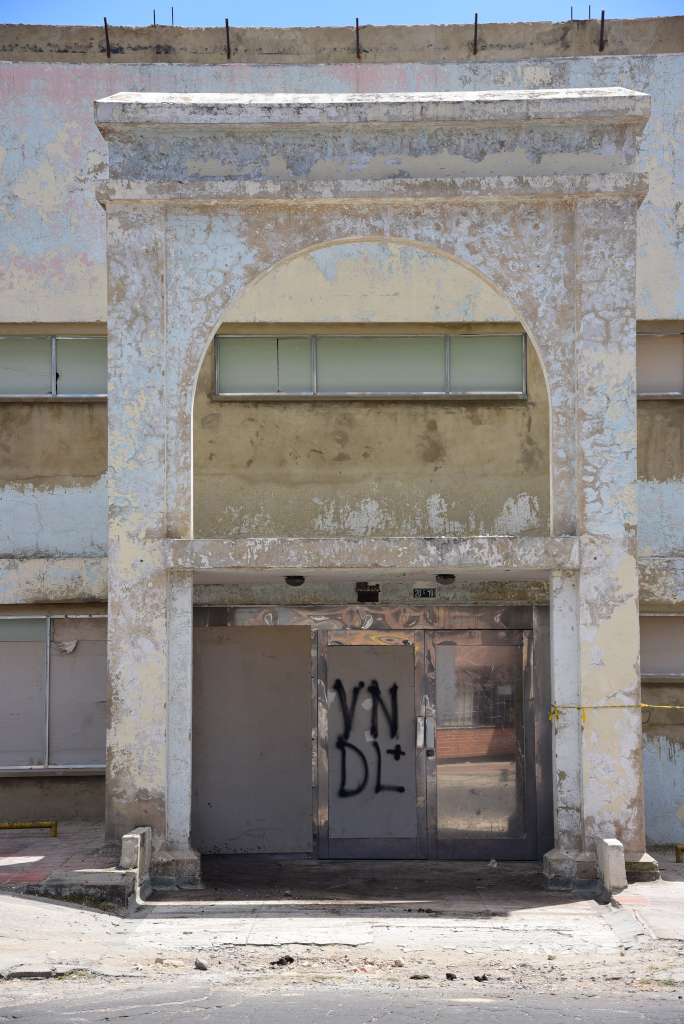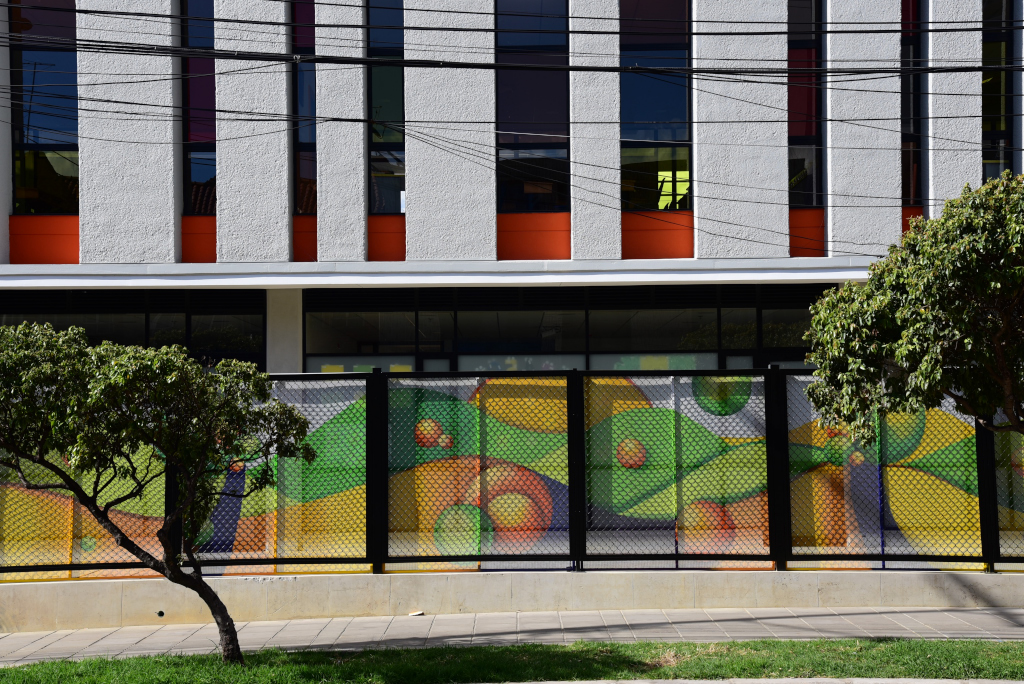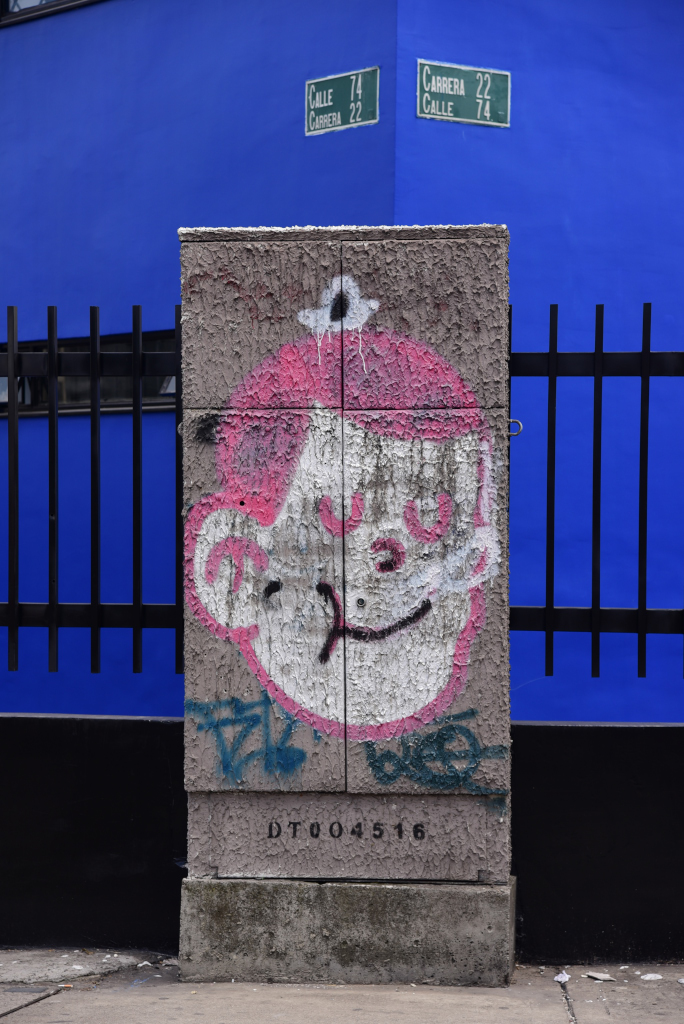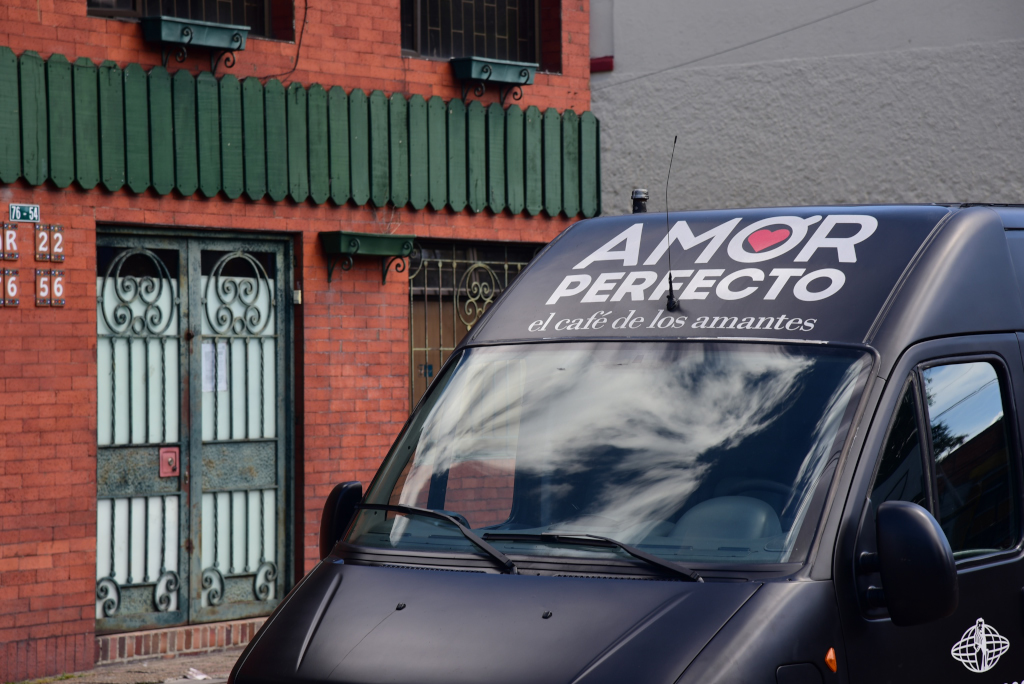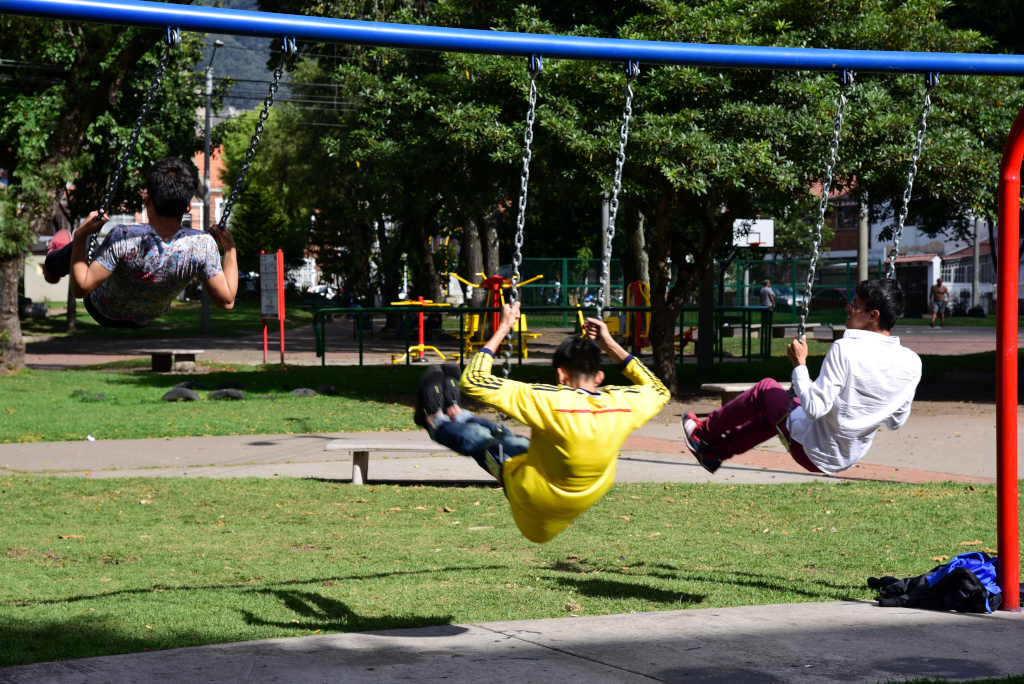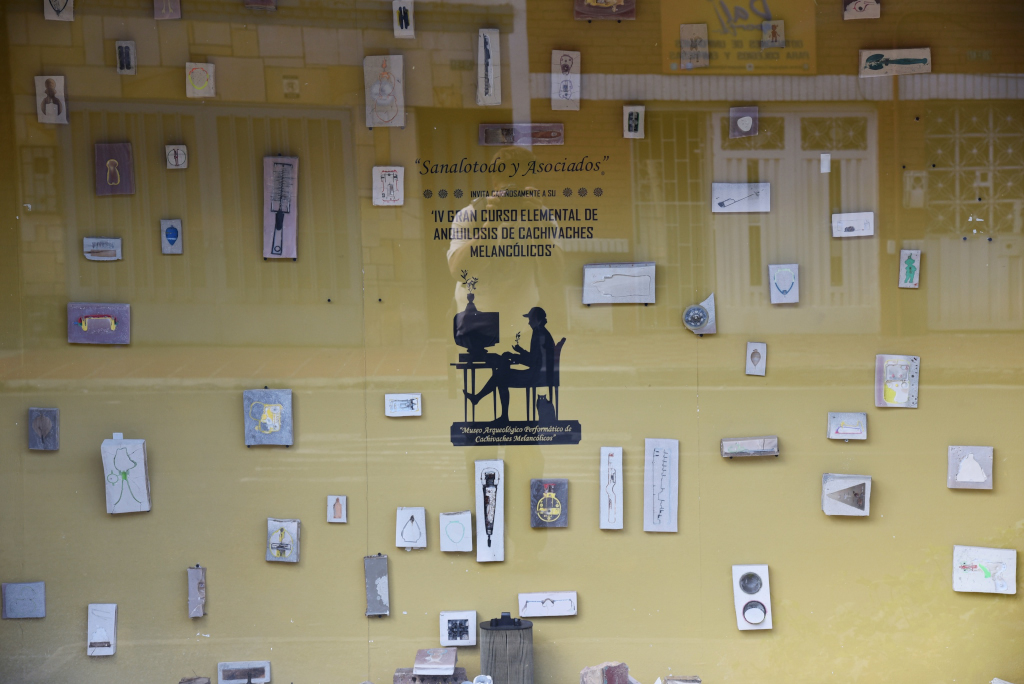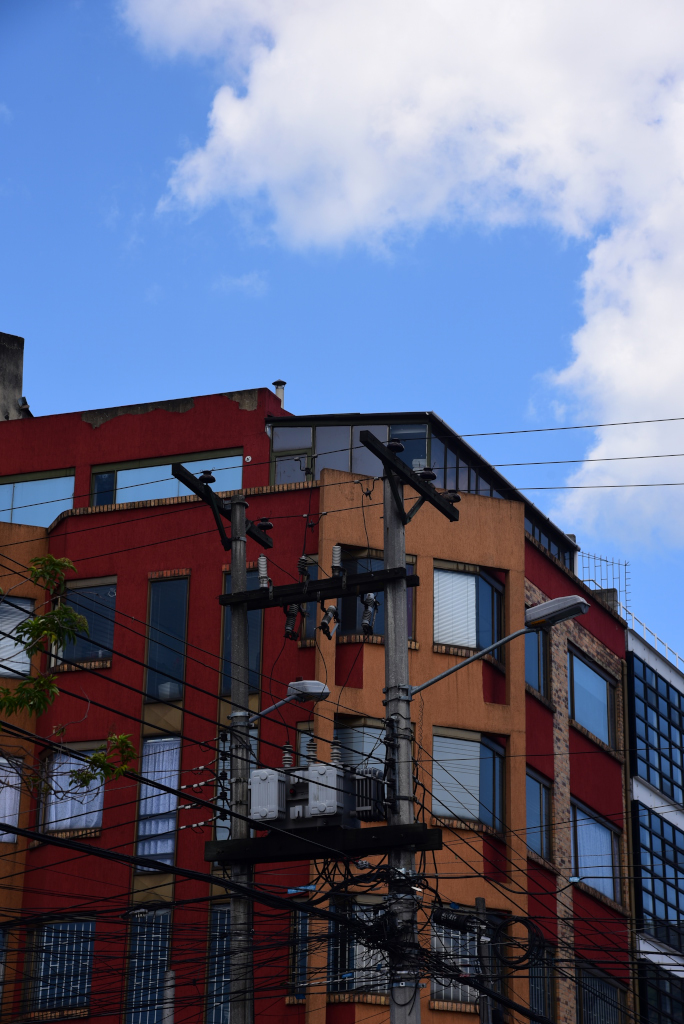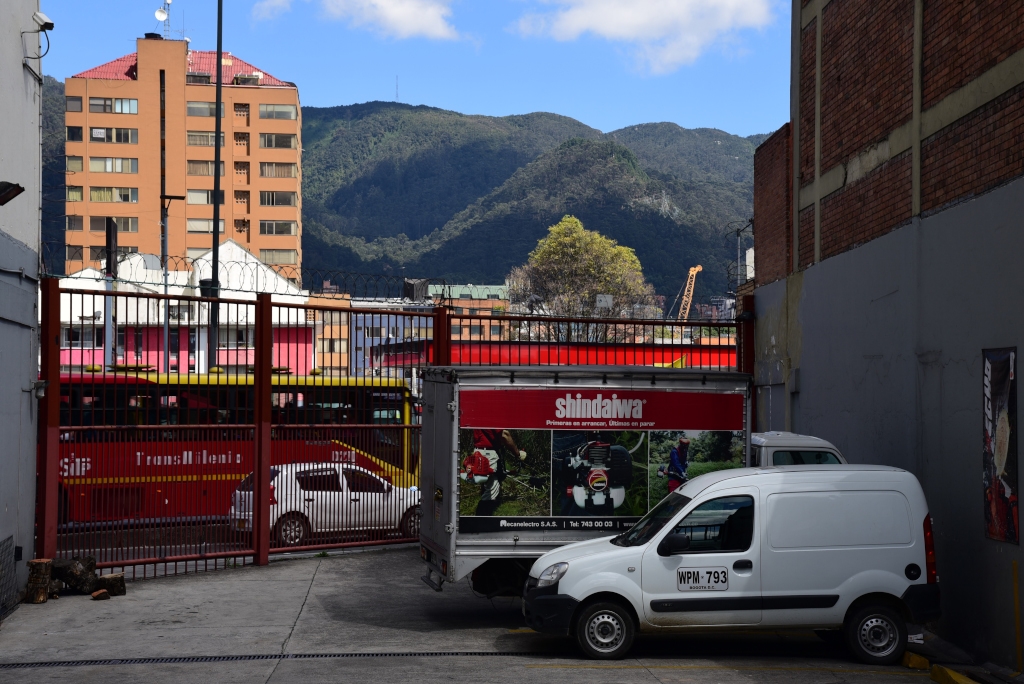March 12, 2018
The day’s plan was initially to visit some of the museums that are open today (the major museums are closed on Mondays, as is the case in most of the world), then the Jardín Botánico de Bogotá, although in the end nothing came of those plans. The day was spent closer to home, walking through the San Felipe neighborhood, in addition to the fringes of Chapinero.
Some facts and figures about the city of Bogotá, pillaged from Wikipedia. Bogotá has a subtropical highland climate, with an average temperature is 14.5 °C, dry and rainy seasons alternating throughout the year. The city covers an area of about 1,600 km2 and is located on a high plateau, at an elevation of 2,640 m (the important part when you find yourself wheezing as you are climbing uphill).
Bogotá is the capital and largest city of Colombia, a city founded over the ruins of the vanquished Muisca city of Bacatá in 1538. Following the Battle of Boyacá on August 7, 1819, Bogotá became the capital of the independent nation of Gran Colombia. Since the Viceroyalty of New Granada’s independence from the Spanish Empire and during the formation of present-day Colombia, Bogotá remained the capital of this territory.
The population is roughly 8 million, political upheavals of the preceding century having led to migration from rural to urban areas, a phenomenon which took place in the rest of the country as well. The city is the financial and commercial heart of Colombia, with the most business activity of any city in the country, and is the leading destination for new foreign direct investment projects coming into Latin America.
Besides having a comprehensive public transit system (which still fails to adequately provide for the city’s burgeoning population), Bogotá is the Colombian city with the most extensive and comprehensive network of bike paths, one of the most extensive in the world, with a total extension of 376 kilometres. Bogotá’s El Dorado airport is the third most important airport in Latin America.
Bogotá has many cultural venues, including 58 museums, 62 art galleries, 33 library networks, 45 stage theaters, 75 sports and attraction parks, and over 150 national monuments. The city has 45 theaters and hosts the Ibero-American Theater Festival, the largest theater festival in the world. Finally, the city is also home to well over 100 institutions of higher education.
I can’t resist visiting one of the upscale cafes on Calle 5, although predictably its quality is nowhere near what it should be. If that is the extent of one’s troubles in life …
Today Quinta Camacho is alive with lunchtime crowds, bringing the otherwise posh reserve of the neighborhood to life. Copious eating establishments are open and filled with people, and happily, amongst the high-priced establishments there are enough almuerzo places with full lunches for no more than COP $ 10,000.
But I don’t plan on spending my time here: having decided to not return to the Candelaria today, I am off to San Felipe, the neighborhood west of Avenida Caracas and north of Calle 70, apparently the centre of the city’s independent art galleries. But there are no galleries to be seen in San Felipe, unless they are more in the manner of private art studios that only open occasionally, or in the evening, or at least not at noontime. It later turns out that the San Felipe neighborhood with the art galleries is somewhere in the far north of the city, too far away to think about visiting at the moment.
But the numerous small metal-work shops, autobody shops, coppersmiths, almacenes, miscellaneous talleres, and above all, local-style restaurants offering inexpensive almuerzos are definitely in business. And the area is surprisingly photogenic, or rather, prone to playful visuals, if not particularly appealing. Beyond the industrial sensibility, there is a somewhat off-beat, redeeming tone to the neighborhood, that I attempt to capture photographically.
Several young men are practising their moves on a skating bowl, sliding down to the bottom, flying up along the undulating walls, then arcing back down, one smooth iteration followed by another, a minor wrong move resulting in a dismount, but no spill. A BMX biker follows, swooshing back and forth on the heavily graffitied bowl. The walls surrounding the encompassing plaza are coated in colourful graffiti and murals.
Irrespective of how banal a neighborhood may be, the green mountains that look over the city from the east are always visible. The occasional clusters of flowering trees provide additional aesthetic magic, although those perfect photographic images are always thrown into disarray by the ubiquitous power lines.
Despite the cool climate, tall, slender palms with spiked leaves are a common sight in Bogotá, the crowns often protruding high up in the sky.
The copper workshops manually produce plates, pans, bowls, household vessels of any shape and size. The copper talleres display typical examples of their wares in front of their shops, sometimes to unusual effect.
On Avenida Caracas, endless processions of Transmilenio buses thunder north and south, cruising into the Calle 76 station to disgorge passengers and pick up another onslaught of passengers.
The area doesn’t have the number of food delivery people that Zona G does, largely because the restaurants in the area are intended to eat in. But bicycles and motorcycles are nonetheless common here, irrespective of the apparent income class of the rider. Bedraggled men pull large carts loaded high with cardboard and other refuse. The small yellow taxis continuously cruise the area, looking for potential fares.

